
The "Feldfernsprecher 17" was designed towards the end of WWI and was in use up to the mid 30ies [2]. There were two types, the "grosser Feldfernsprecher 17", a complete - and compared to its predecessor the "Feldfernsprecher 16" - lightweight and compact LB field instrument, and the "kleiner Feldfernsprecher 17", an even compacter and lighter option with only buzzer support and no space for the handset which has to be carried separately, a setup similar to the earlier Armeefernsprecher with a "Feldsprechbatterie 16" battery box of identical size to the "kleiner FFsp 17" [3]. The general form factor of the "grosser Feldfernsprecher 17" was kept for the "Feldfernsprecher 26" as well as the "Feldfernsprecher 33".
For the "kleiner Feldfernsprecher 17" there existed also a "Umgeänderter Zusatzkasten" or a "Weckerzusatz 17" to make it magneto call compatible [5][6]. The included "Vermittlungsschnur" (Switching cord) was carried in a pouch on the carrying strap (both missing on mine) [4].
There is no mfg. date on the device. It has to be assumed that these were only made for a very brief period between 1917/1918 before the end of WWI.
"Der Grosse Feldfernsprecher 17" in "Nachrichtenfibel (Für Fernsprech- und Blinktechnik), 1931" [1] (Though mainly a description of the drawbacks compared to the "Feldfernsprecher", by which the Modell 26 is meant here):
Before the "Feldfernsprecher" was put into service in the army, the "Grosser Felfernsprecher 17" was used. Its disadvantages were eliminated by the "Feldfernsprecher". While the microphone circuit in the "Feldfernsprecher" was switched on and off by the hook switch, this was done on the "Grosser Felfernsprecher 17" by the push-to-talk button on the handset. Since pressing the push-to-talk button was very easy to forget, this led to malfunctions, and no voice connection was established. In the "Feldfernsprecher", the handset was given the form of the postal handset. The unhygienic speaking funnel was thus eliminated. Compared to the "Grosser Felfernsprecher 17", the "Feldfernsprecher" features several innovations. The inductor has only two magnets, yet its power handling is greater because the armature winding has been improved. The Lb/ZB terminal and a external dial unit allow the "Feldfernsprecher" to be used for connection to various systems. With the "Grosser Felfernsprecher 17", a public exchange connection module was required for this.
"Der Feldfernsprecher 17" in "Nachrichtenfibel (Fernsprech-, Blink- und Signaldienst) nebst (Meldehund- und Brieftaubendienst). 6th Ed., 1936" [2]:
- The "Feldfernsprecher 17", or more precisely, "der grosse Feldfernsprecher 17", is a field telephone built towards the end of the war, designed purely as an open-circuit (OB) device. It weighs 6.25 kg and is similar in construction to the "Feldfernsprecher 26". Therefore, only the essential differences are described here.
- The "Feldhandapparat 17" (Field Handset) consists of a wooden handle with an oval cross-section, which houses the springs for the push-to-talk button and the earpiece. The receiver and microphone are mounted similarly to the "Feldhandapparat 26", except that the microphone opening here consists of a hinged metal plate. The push-to-talk button — which, due to operating errors and user fatigue, was replaced by a hook switch on the "Feldfernsprecher 26" — is rotatable by 90 degrees so that when the handset is gripped correctly, the corresponding circuits inside are activated. The talk button must also be pressed to listen. For better hearing, the loudspeaker button must be pressed, which bridges the talk button and the secondary winding. The connecting cord to the handset has five conductors and terminates in a five-prong plug.
- In this ringer unit, the inductor still consists of three horseshoe magnets (resistance 350 ohms). Otherwise, it is similar to that of the "Feldfernsprecher 26", but electrically inferior, as is the AC ringer (1500 ohms for both coils). It also contains the test button, the switching and connection jack, the speaking coil, etc.
- The "Kopffernhörer 17" (headset) serves the same purpose as with the other telephones and has a similar design and accessories.
- The "Summerzusatz 17" (buzzer module), as an accessory, enables the "Feldfernsprecher 17" to be used for buzzer operation [...].
- The switching cord, as with the "Feldfernsprecher 26", is in a pocket on the carrying strap [...].
The modular plug-in "Summerzusatz 17" (buzzer module) can be used on the "grosser Feldfernsprecher 17, "kleiner Feldfernsprecher 17" and also is compatible to the "Feldfernsprecher 26". From the next generation "Feldfernsprecher 33" onwards no buzzer function was used anymore.
Disassembled.

Wiring diagram mounted inside of top lid.
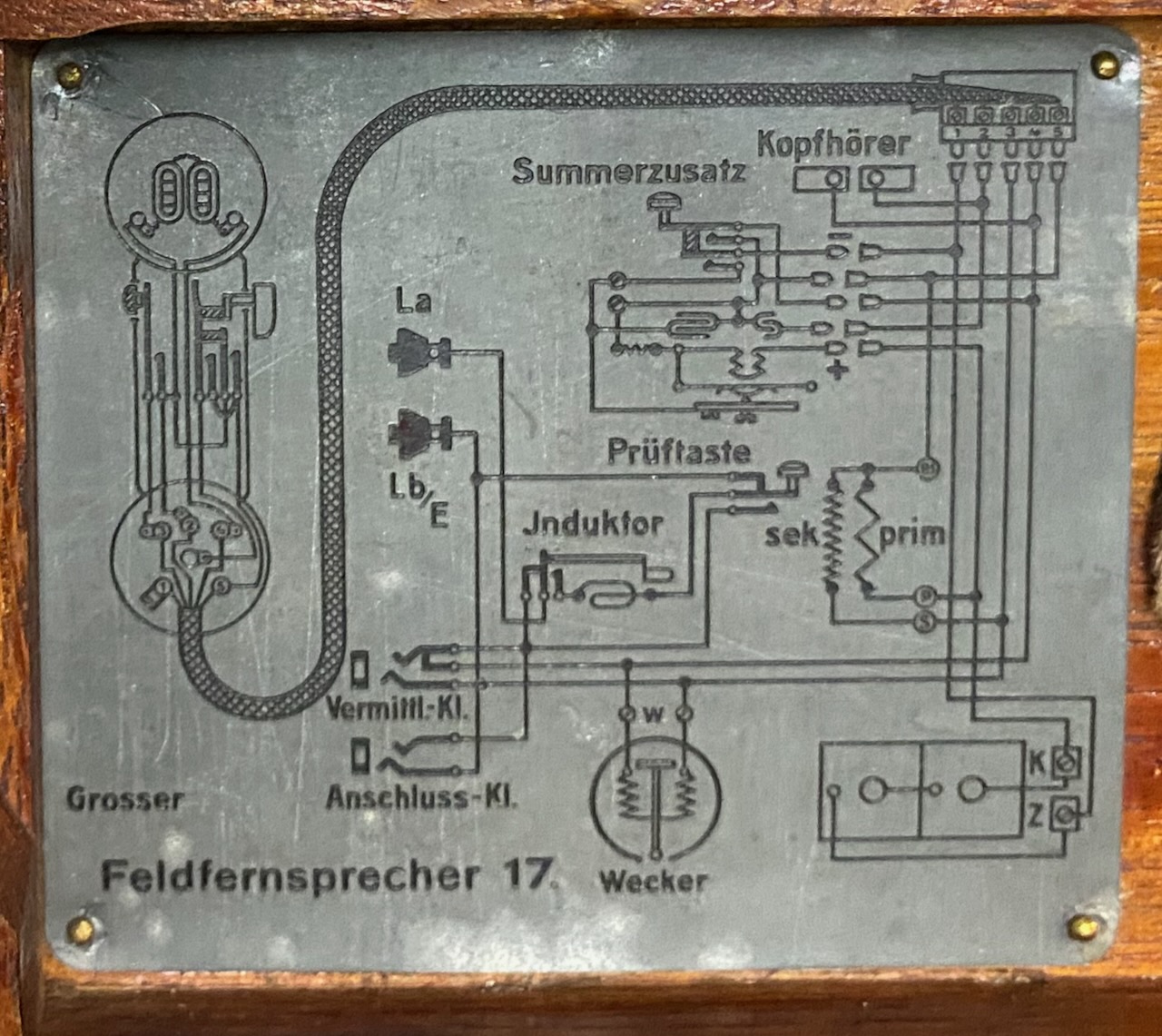
Electrical diagram [2].
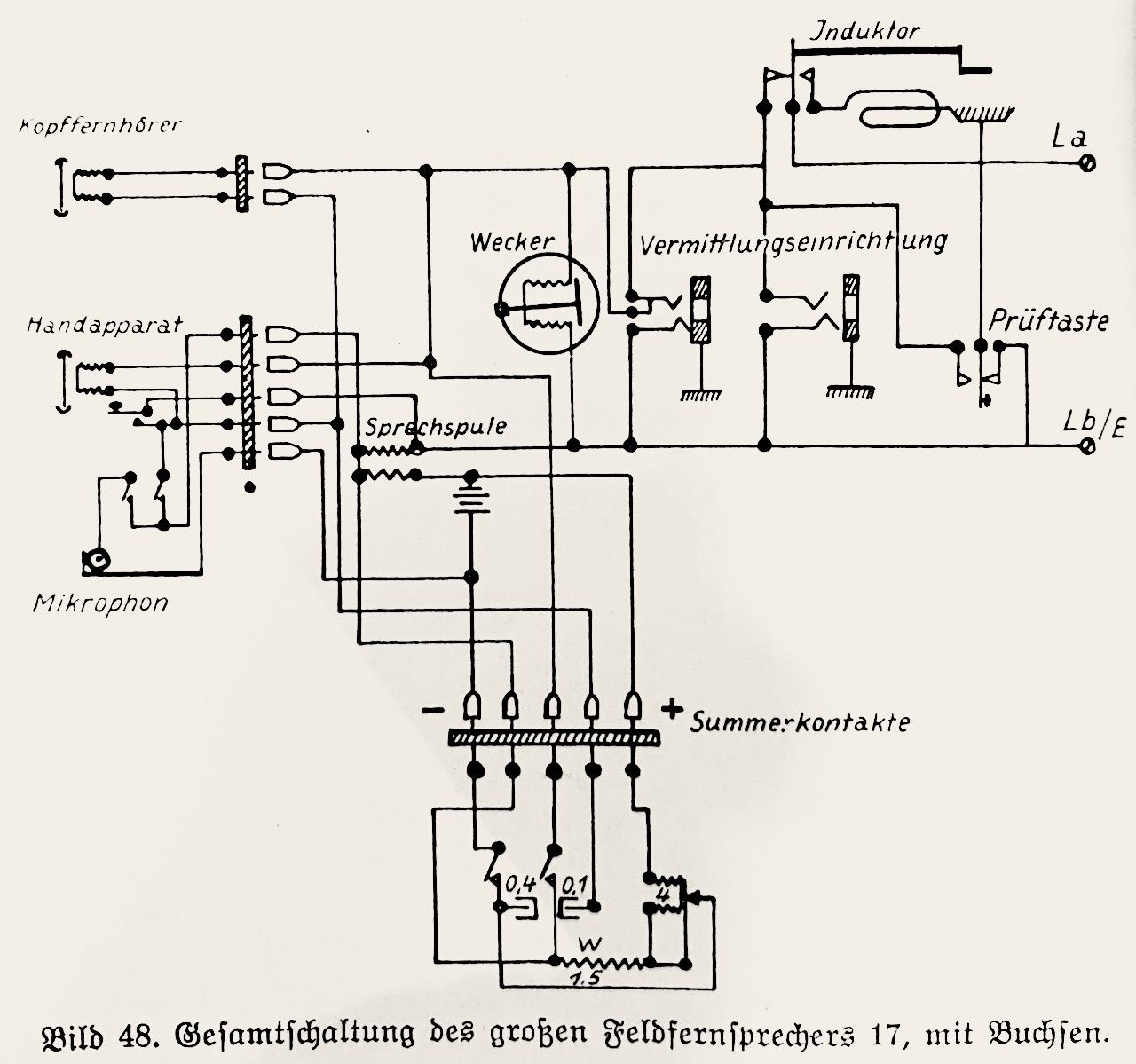
The pre 1933 spelling table.

Made by E. Zwietusch & Co. GmbH, Charlottenburg.
Serial number 27858.
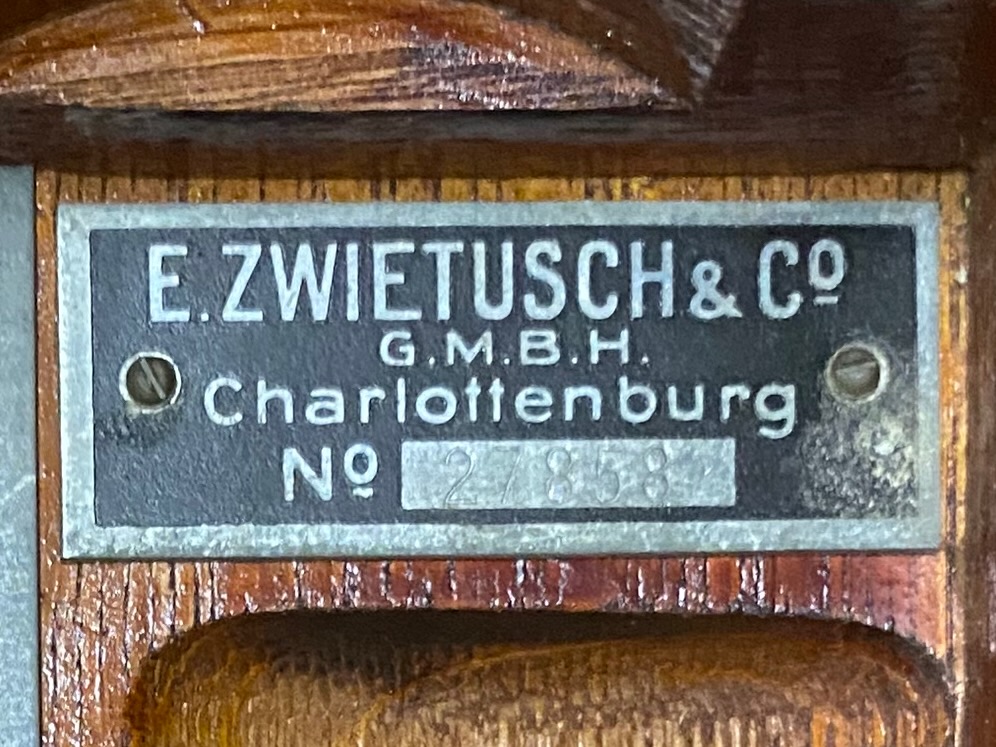
Guide mounted on the top lid inside indicating to remove 3 screws from the bottom and the battery connections to remove the main board.
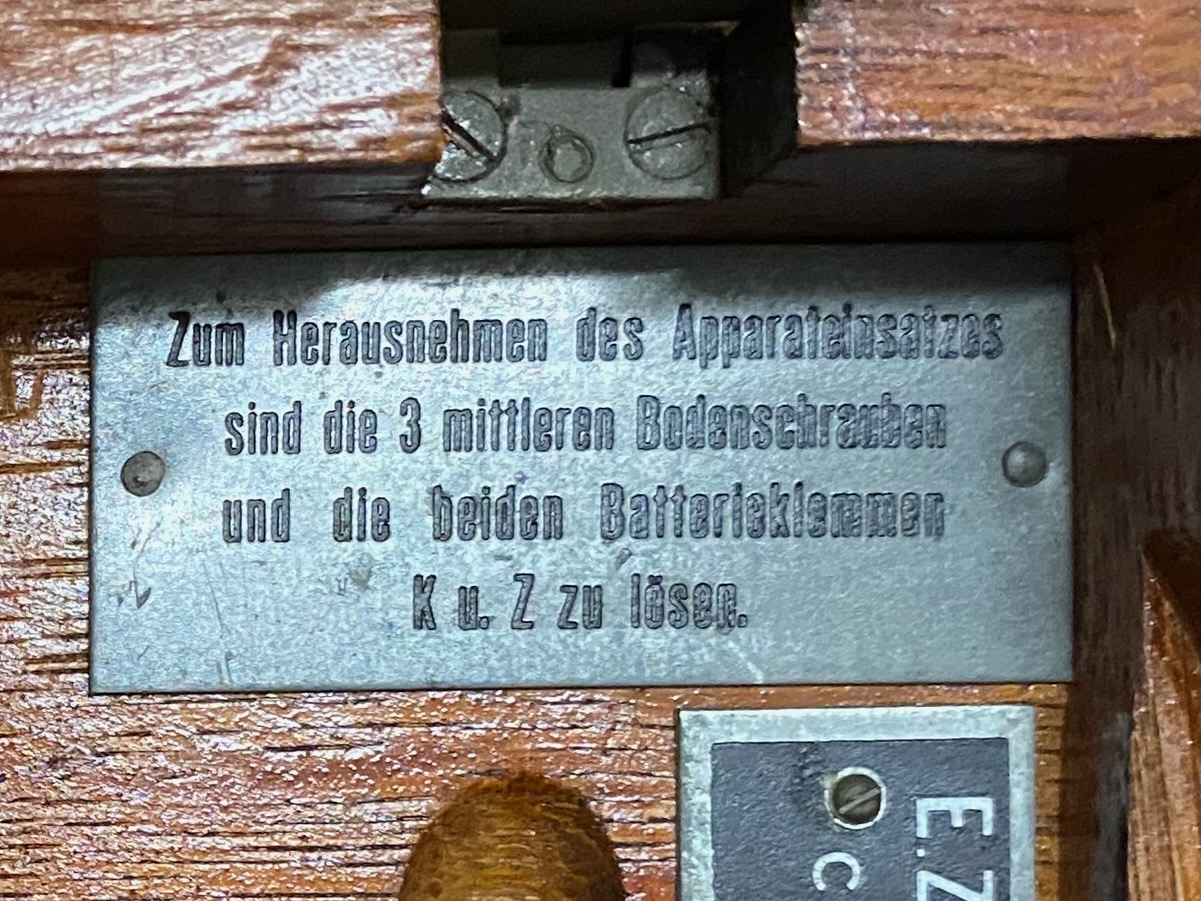
The box with main board and battery elements removed.
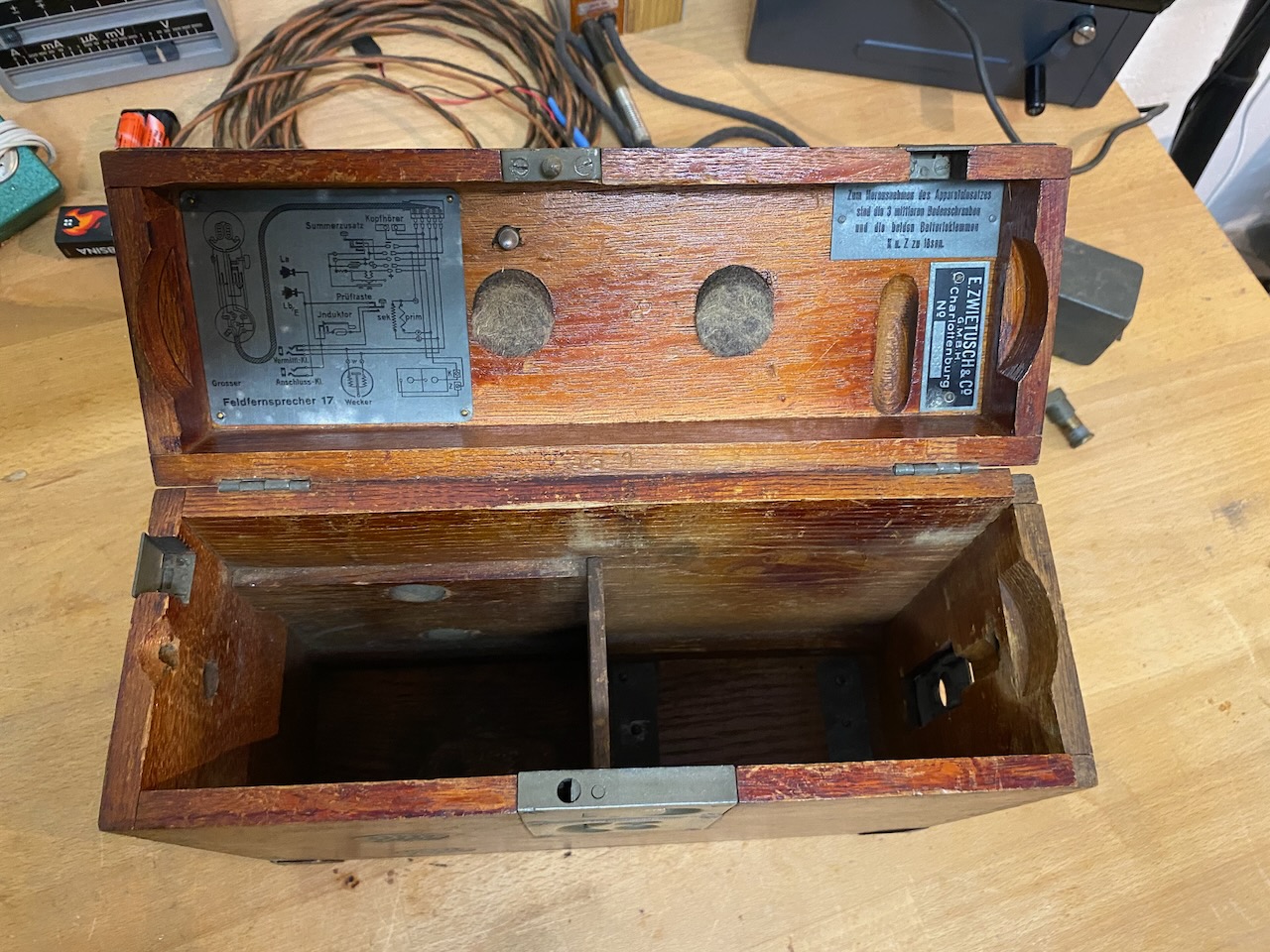
The open buzzer module.
Top left the buzzer button, on the right the adjusting screws and in the back the capacitor.
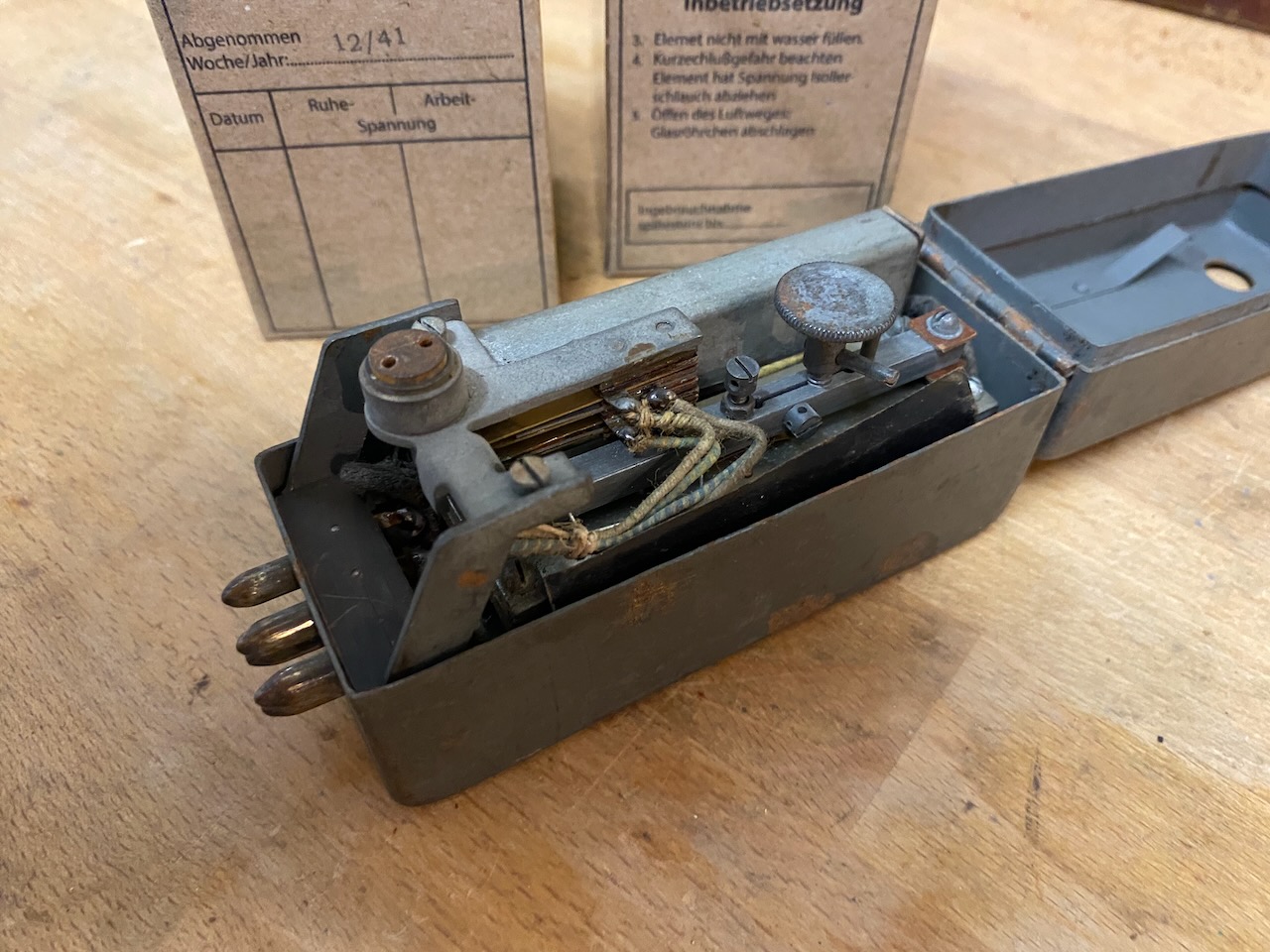
The closed buzzer.
On top the button, in the front the 5 connector prongs.
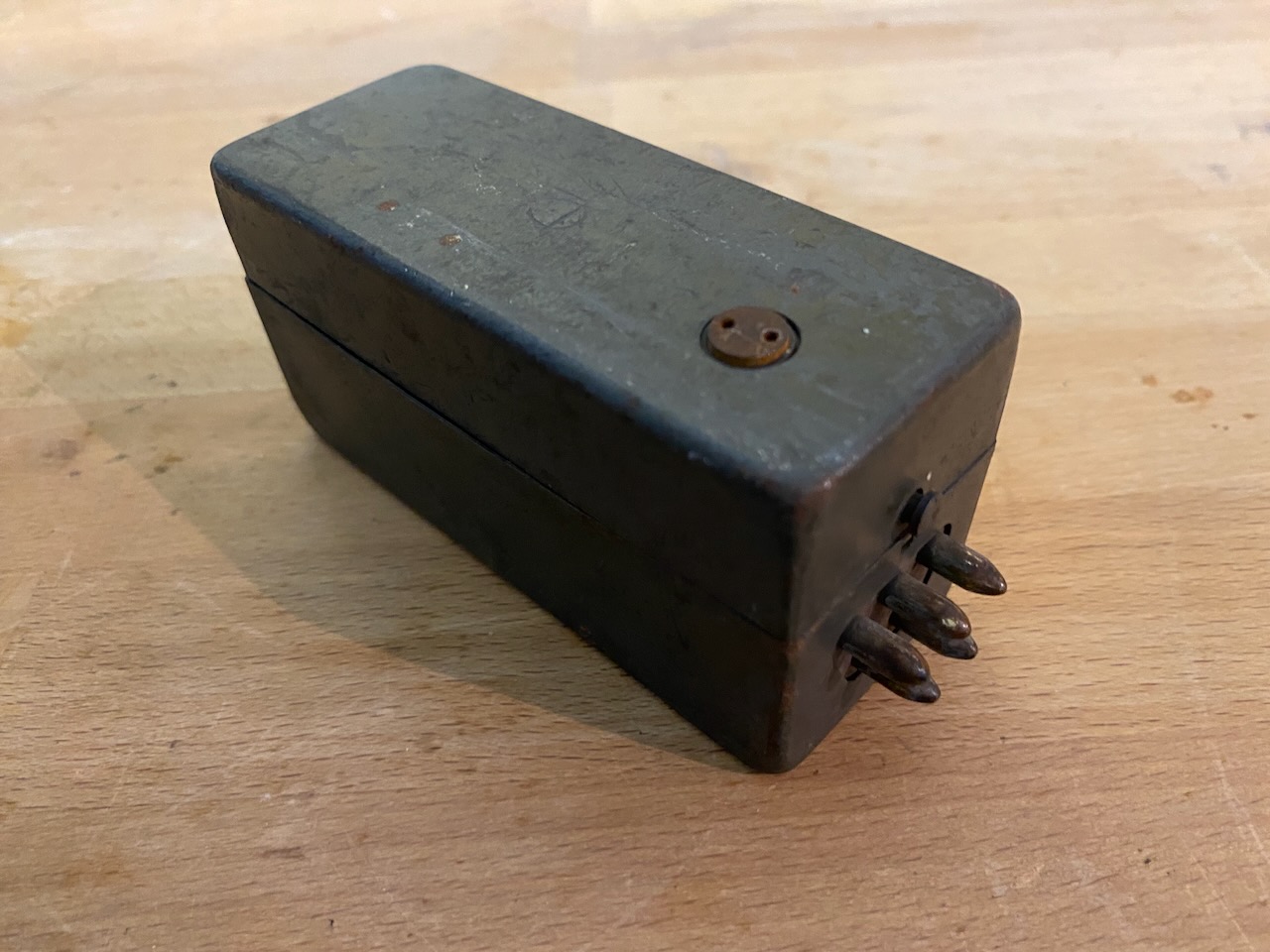
Buzzer from the top.
Barely visible in the middle, the manufacturer is "CL" (C. Lorenz AG)
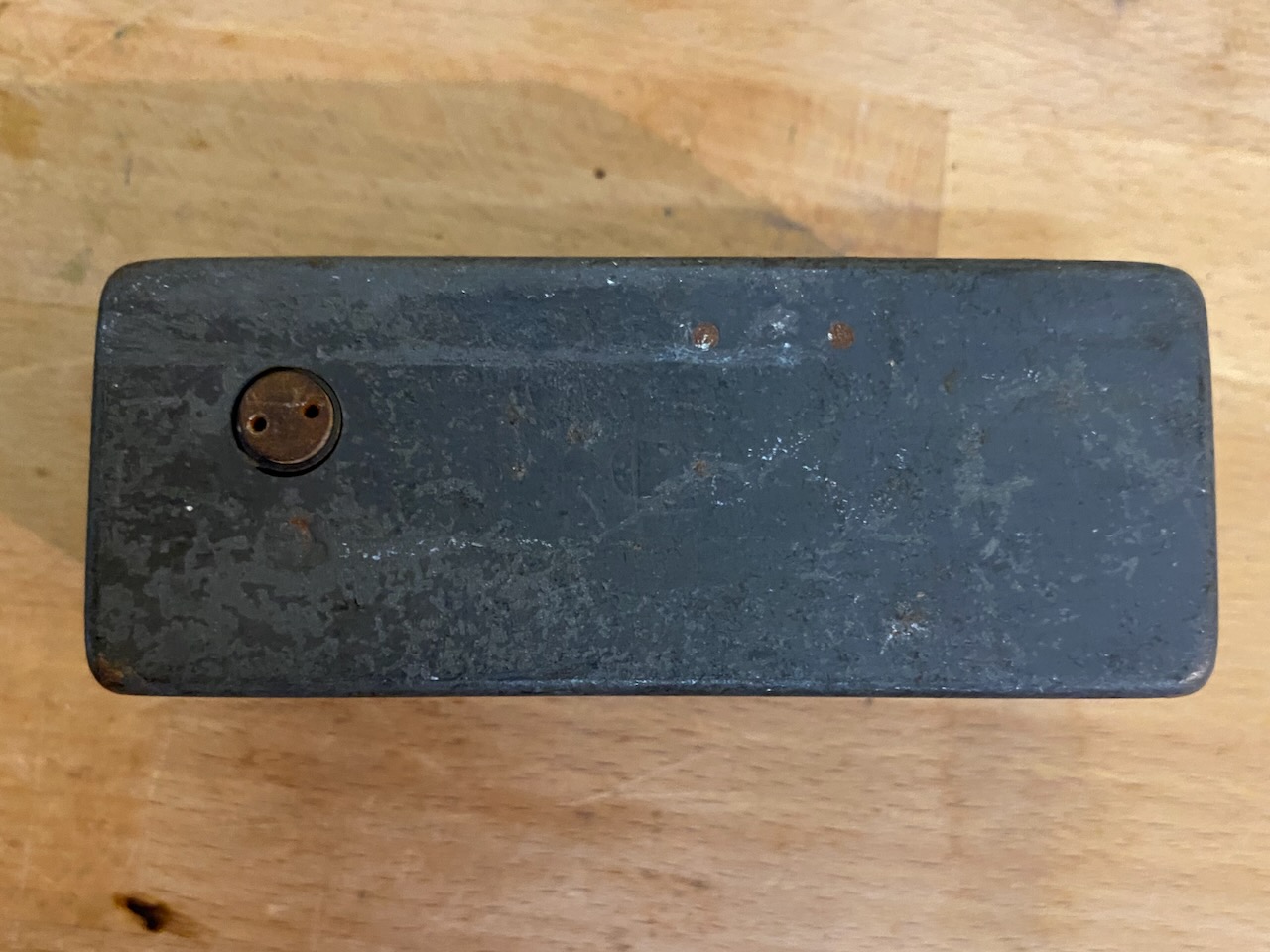
The main board from the front.
On the bottom the 3 bar magneto, above the ringer and to it's left the two connections sockets.

The main board from the right side.
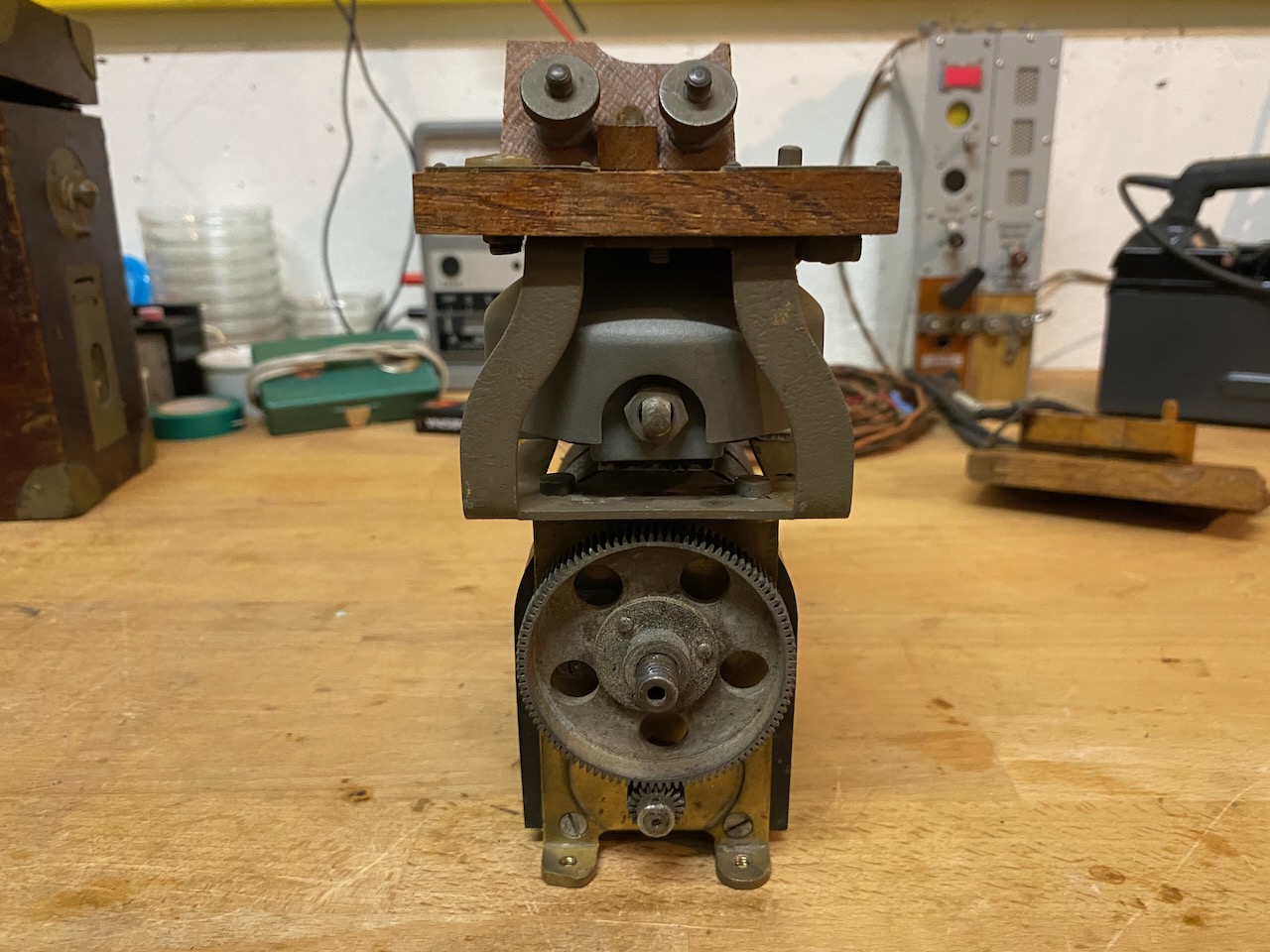
The main board back side.
The coil is hidden behind the wires.

The main board left side.
On top the buzzer sockets and below it the battery binding posts.

The main board from top.
Top left the handset sockets, to the right the headgear sockets.
Below it the line binding posts and on bottom right the line test button.
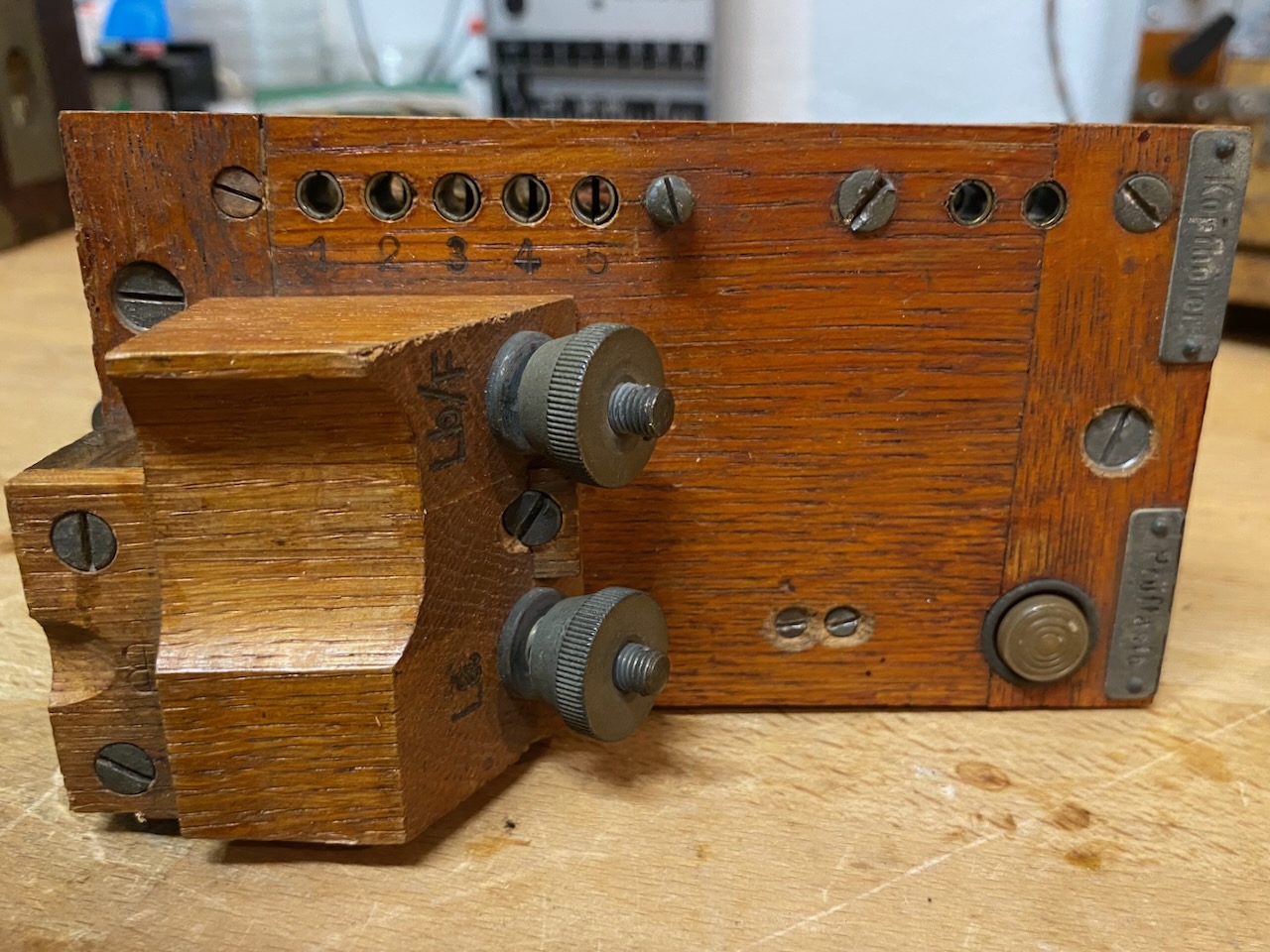
The handset "Feldhandapparat 17" with open TX and RX side.
The handle is made of wood.
The small handle is the PTT lever.
The button on the side is the loudness button.
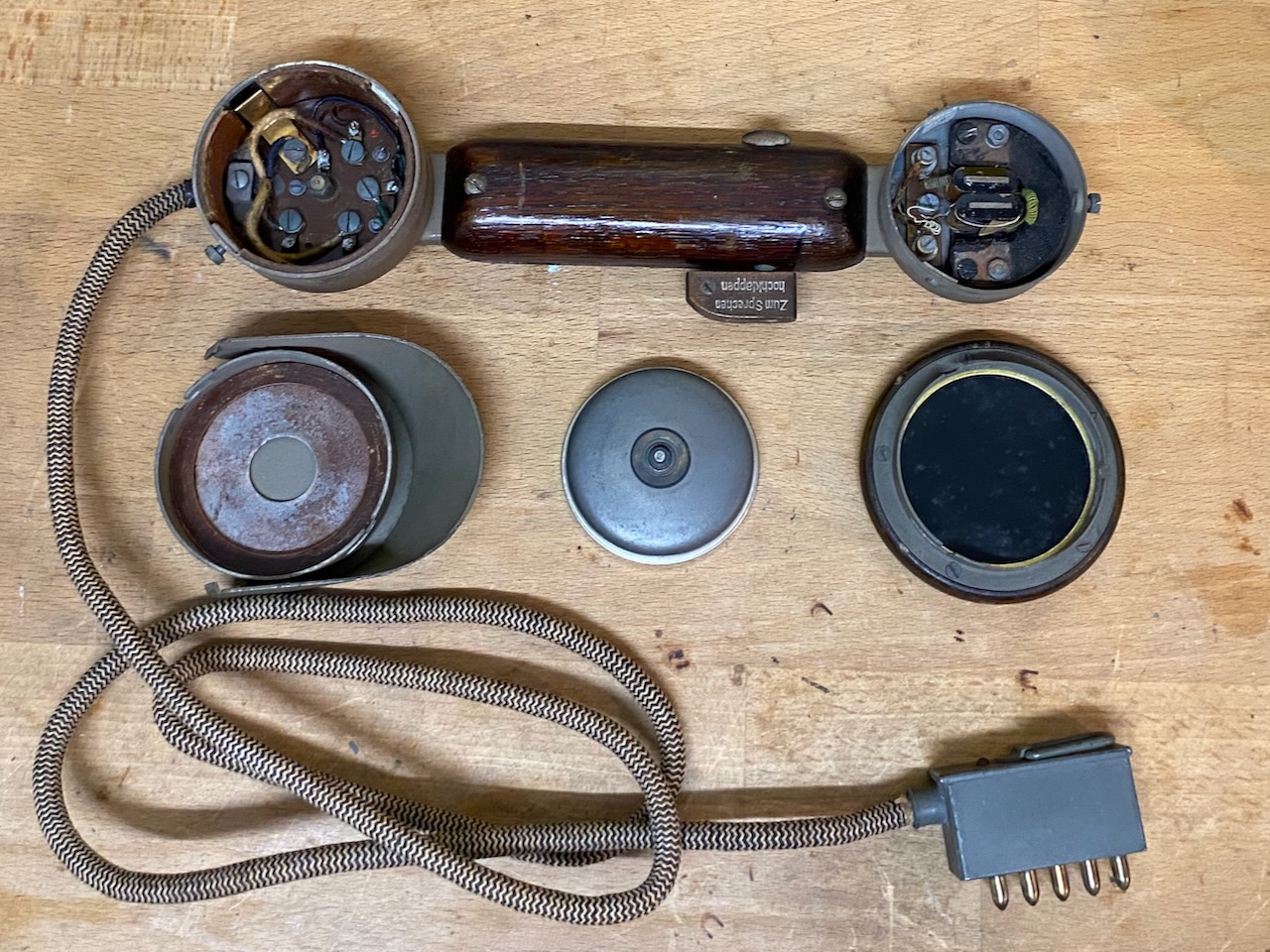
"Zum Sprechen hochklappen", fold up to speak.
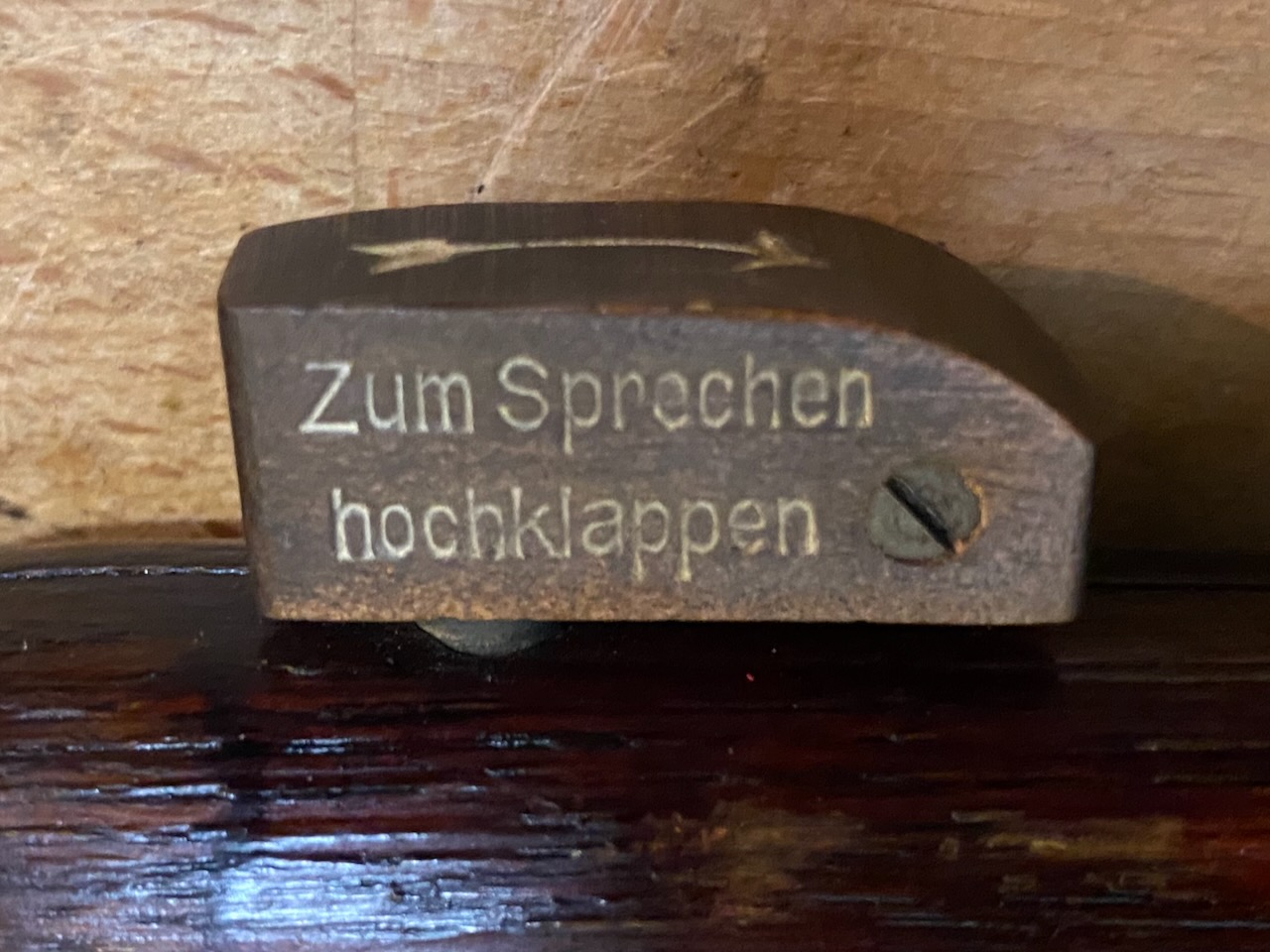
RX side.

TX side.
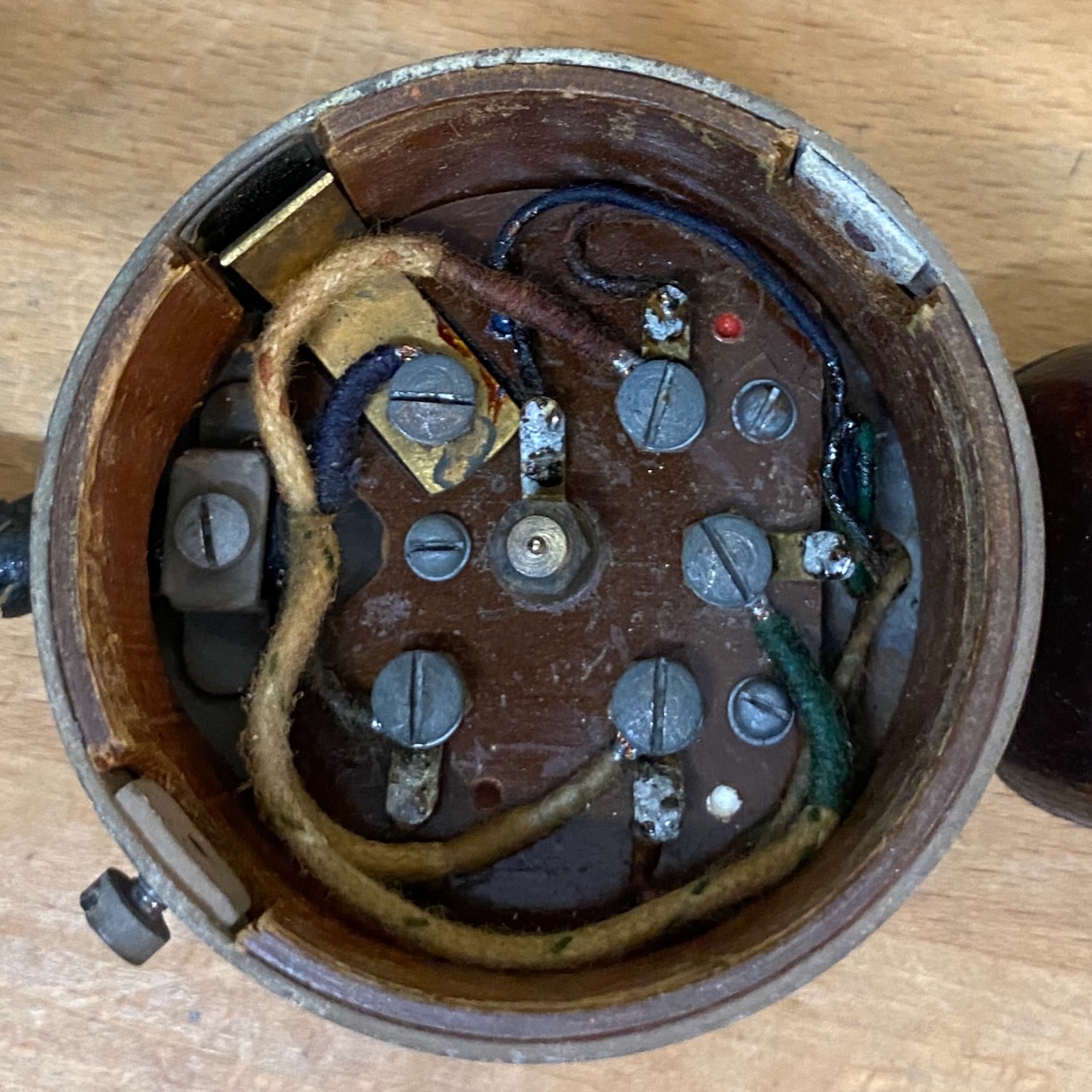
Microphone capsule.
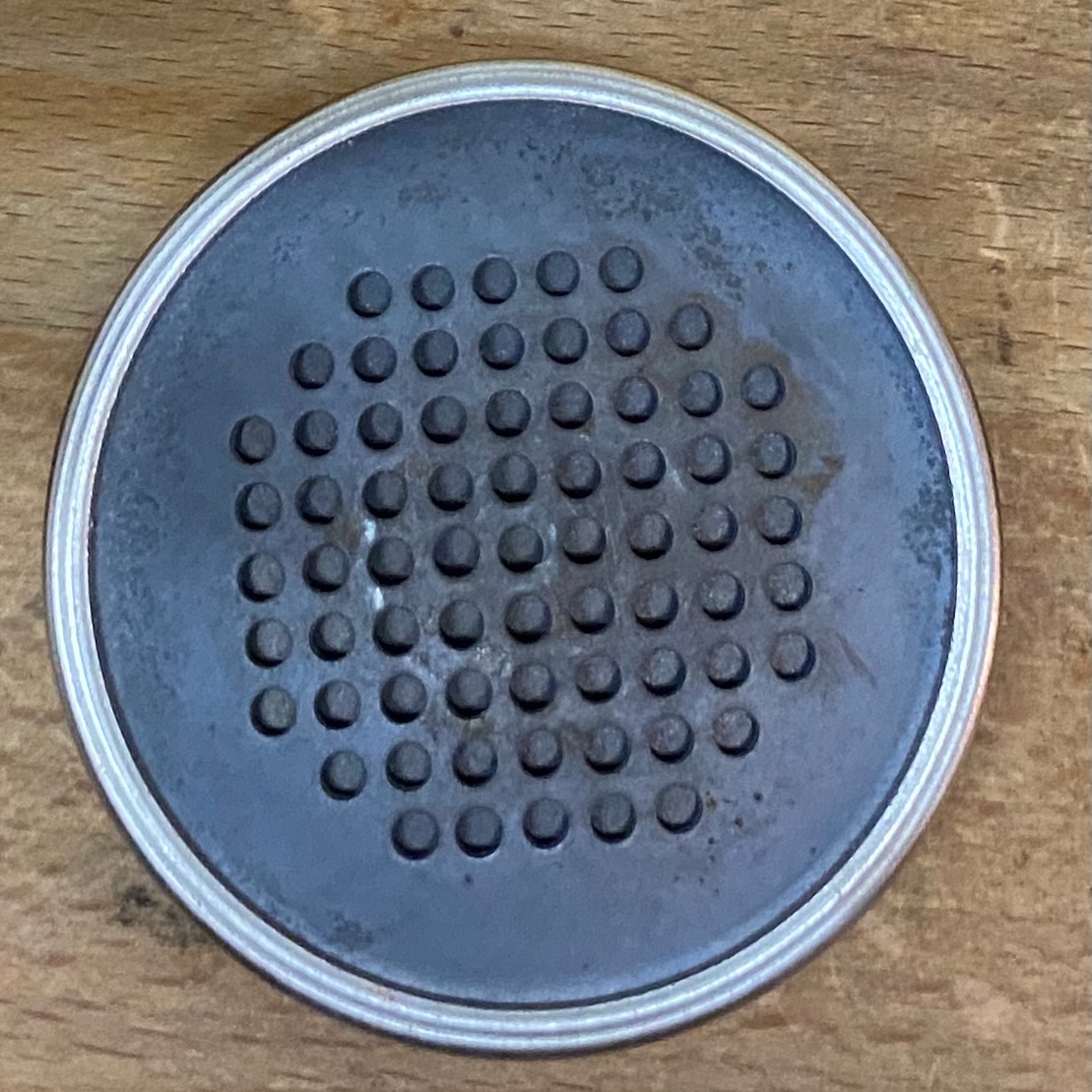
All neatly arranged to mount again.
The battery elements are nicely made replicas I got recently (nicer than my selfmade ones).

Ready to use.
The buzzer can be activated through a button below a caoutchouc covered hole.
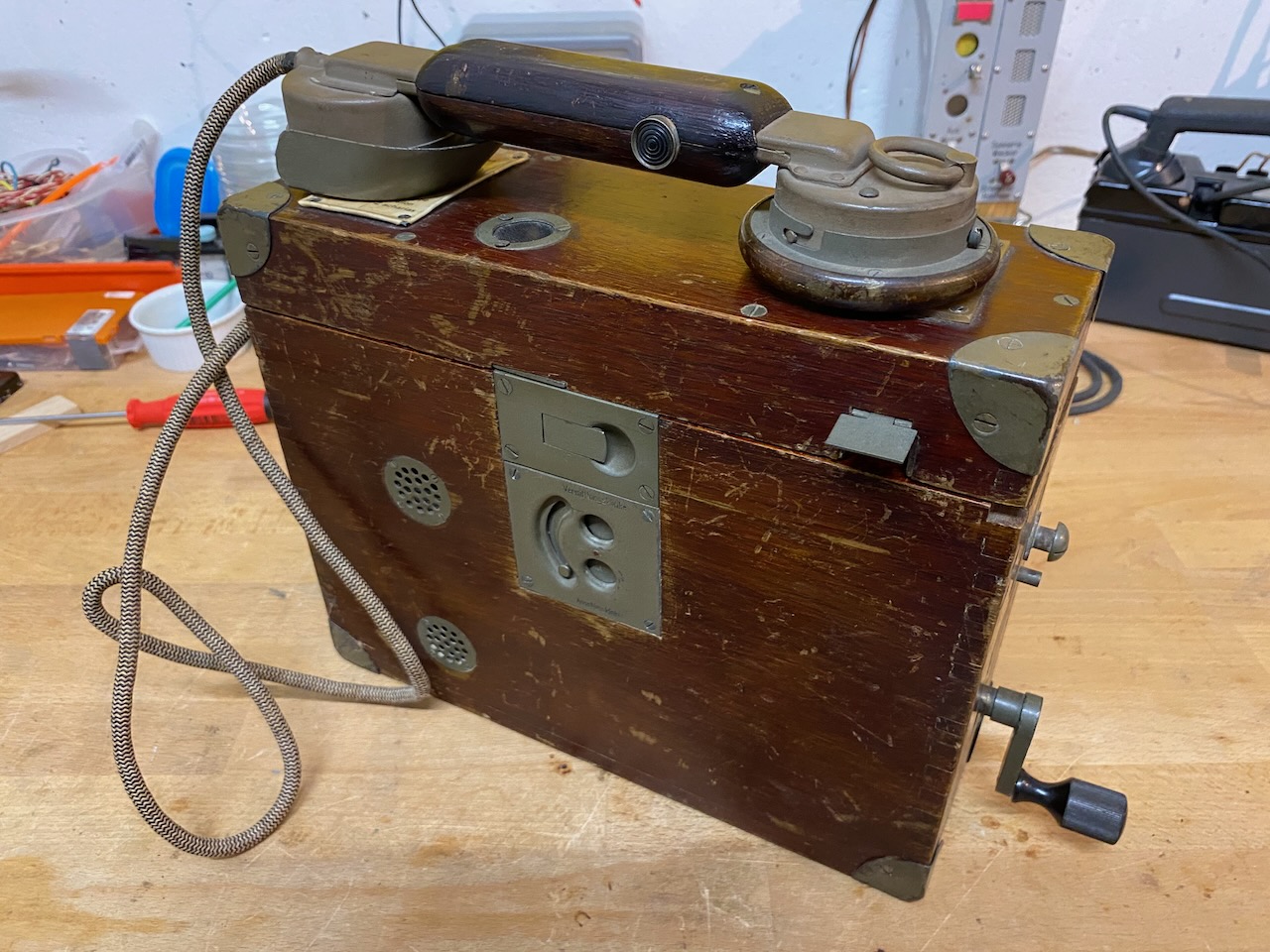
"Bild 47. Grosser Feldfernsprecher 17, gebrauchsfertig" [2].
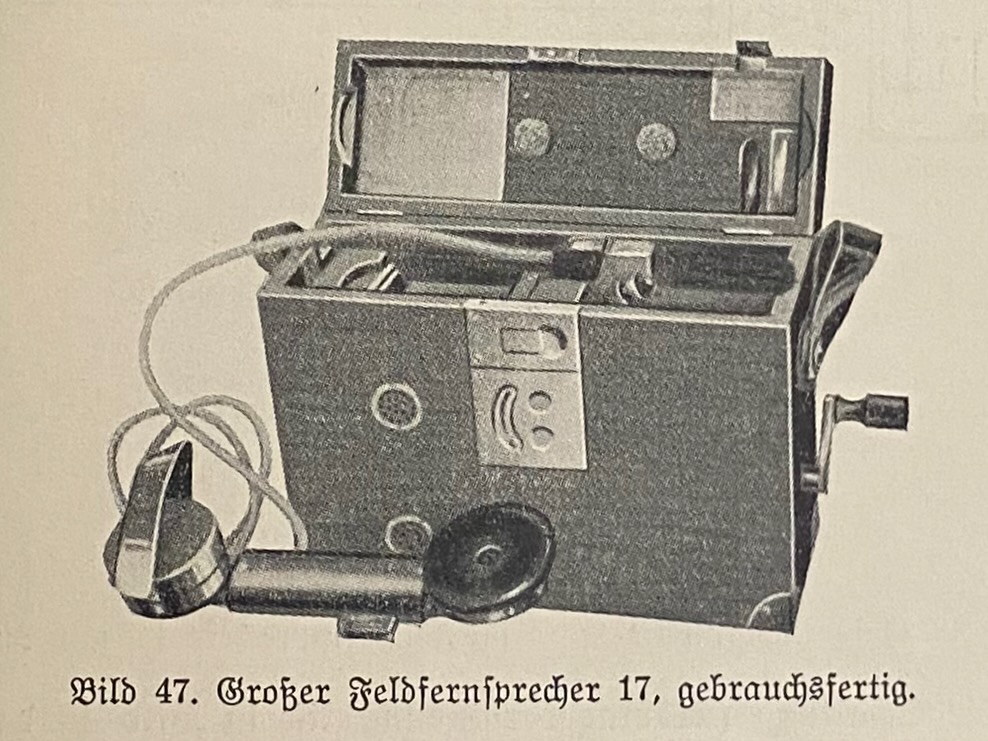
The buzzer mounted.
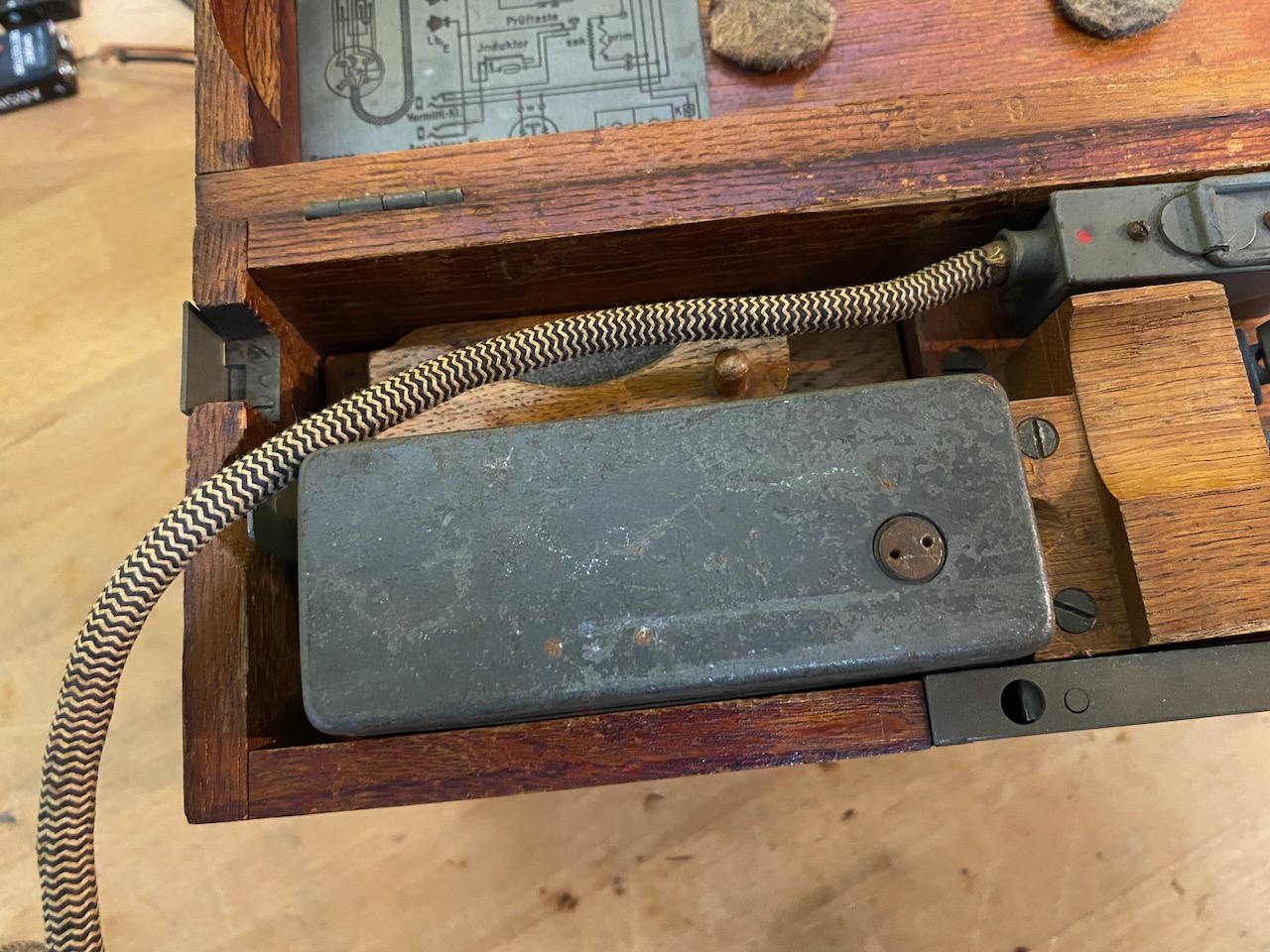
The buzzer removed.
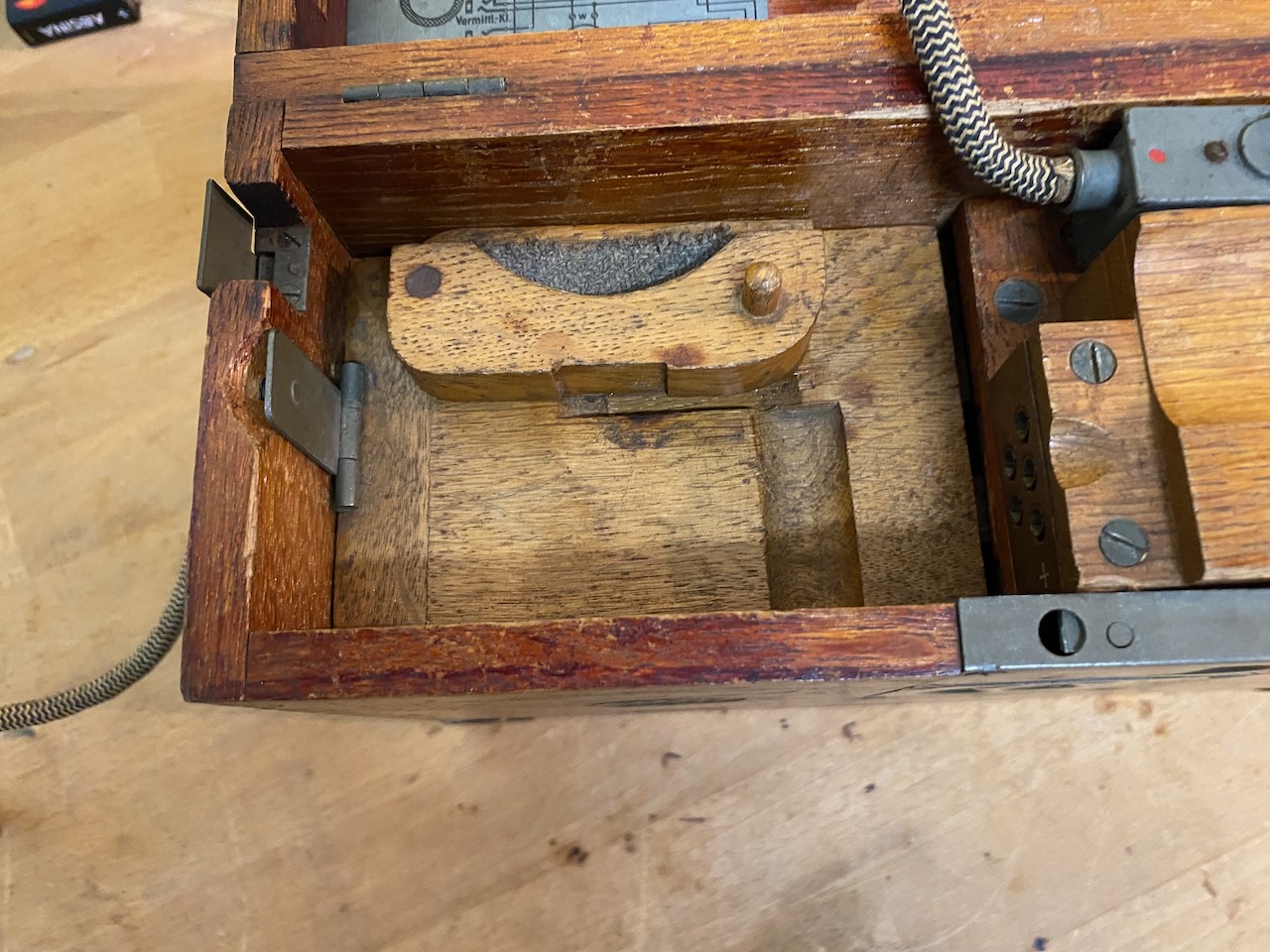
The battery cover handset support can be folded back when the buzzer is removed.
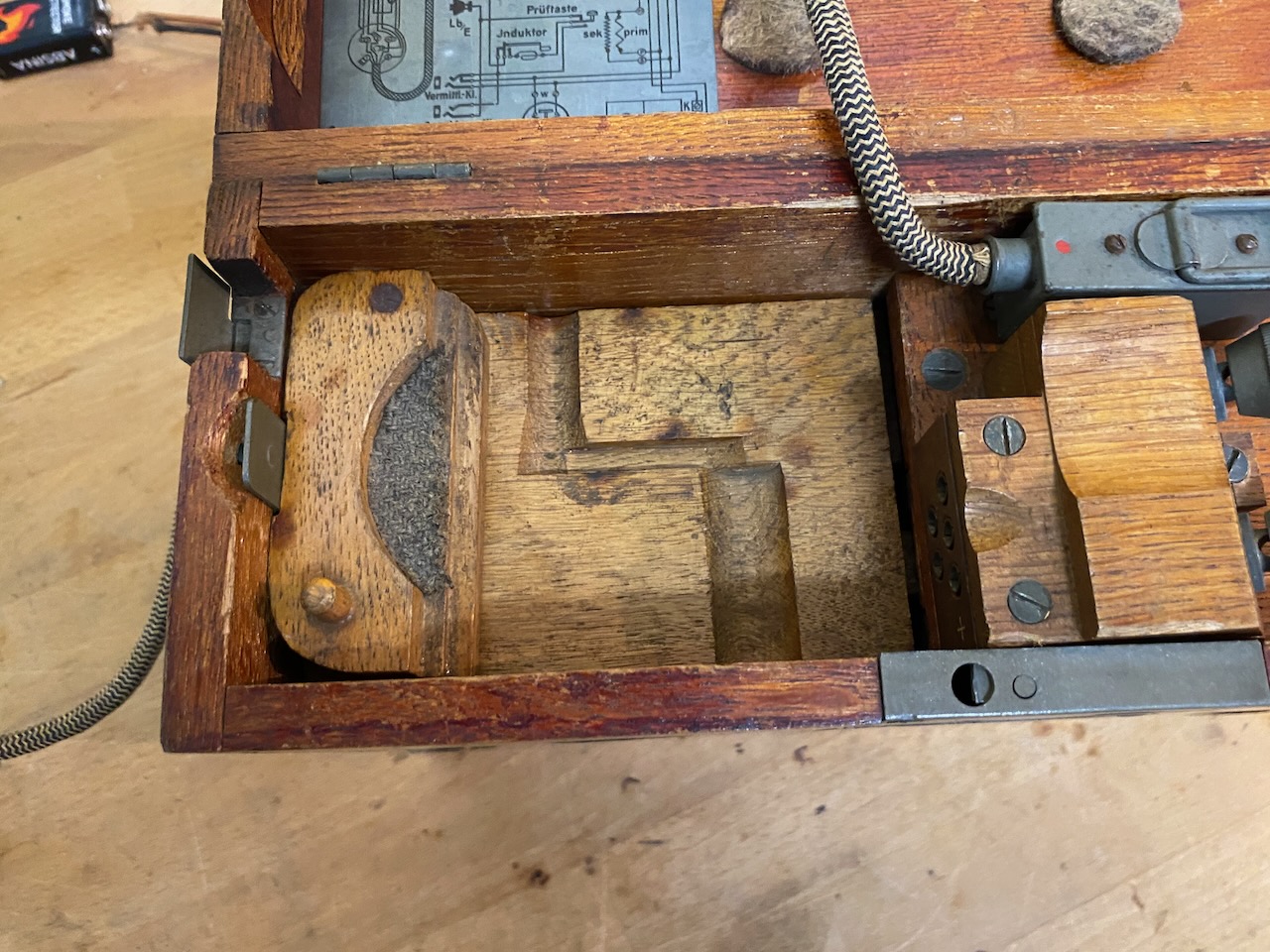
The magneto crank handle is stored on top of the battery cover.
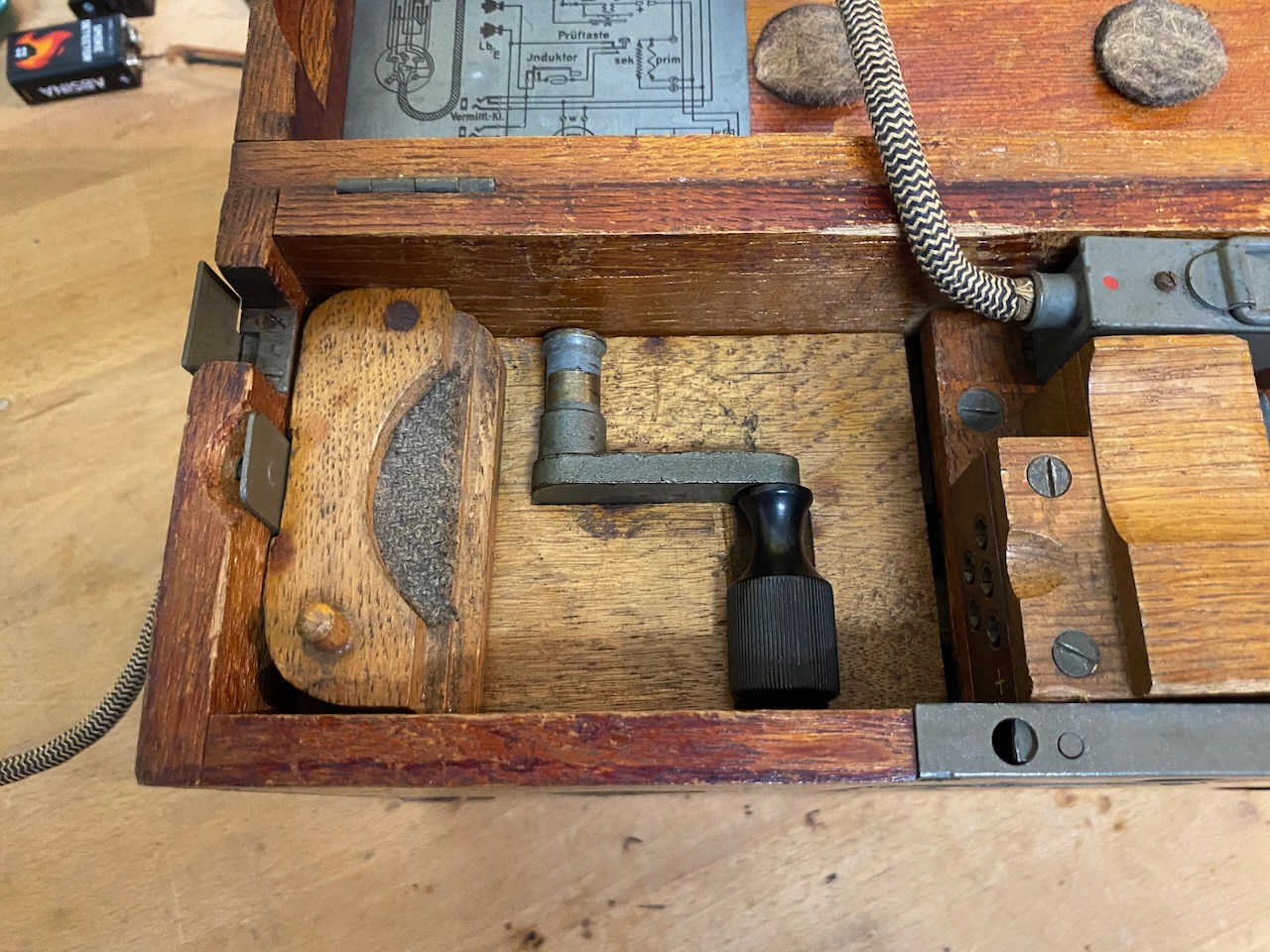
Handset stored.

Ready for transport.
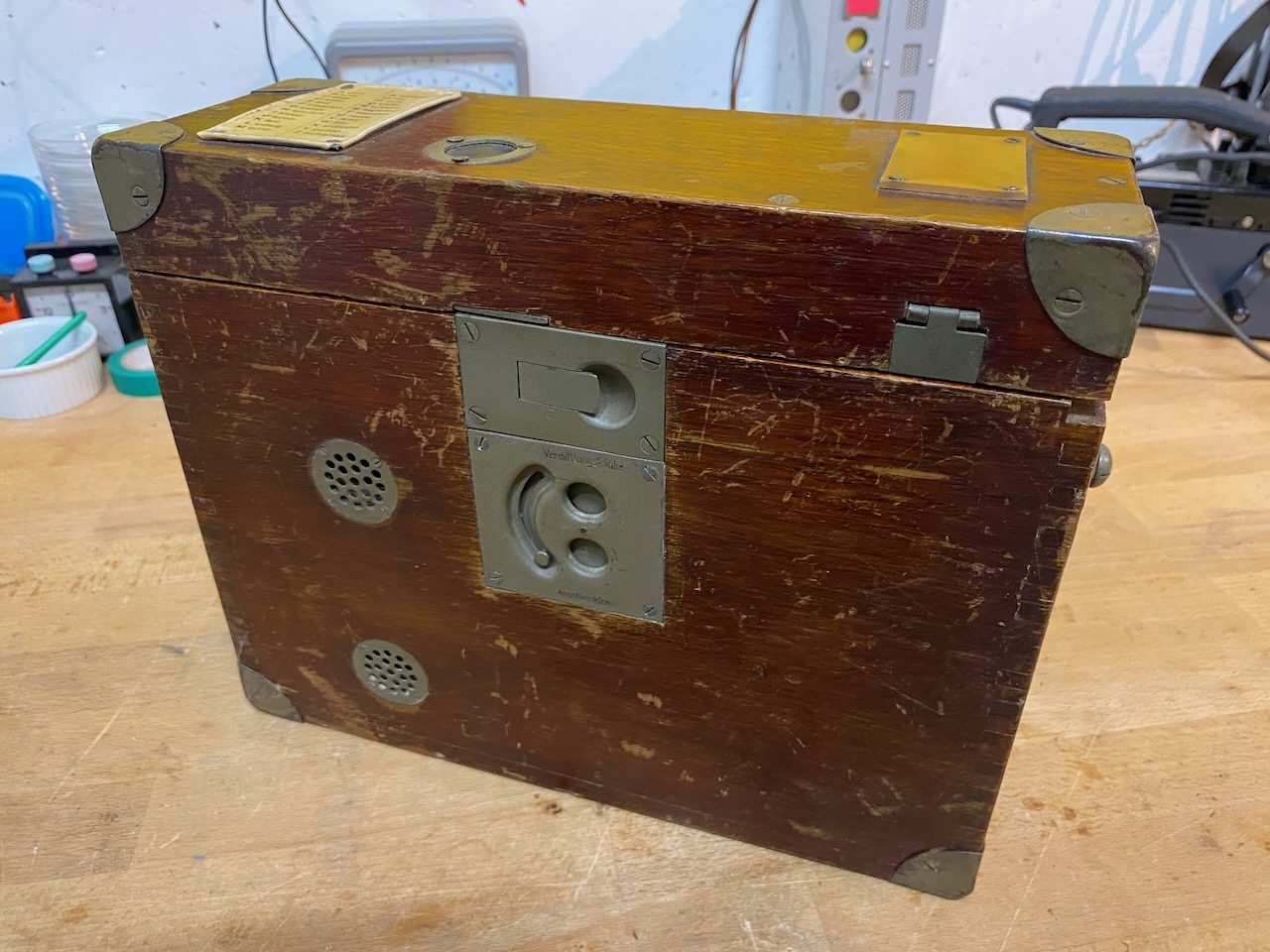
The sockets for the line plug for connection (Anschlussklinke) and switching (Vermittlungsklinke) are covered by a spring loaded moveable lid.
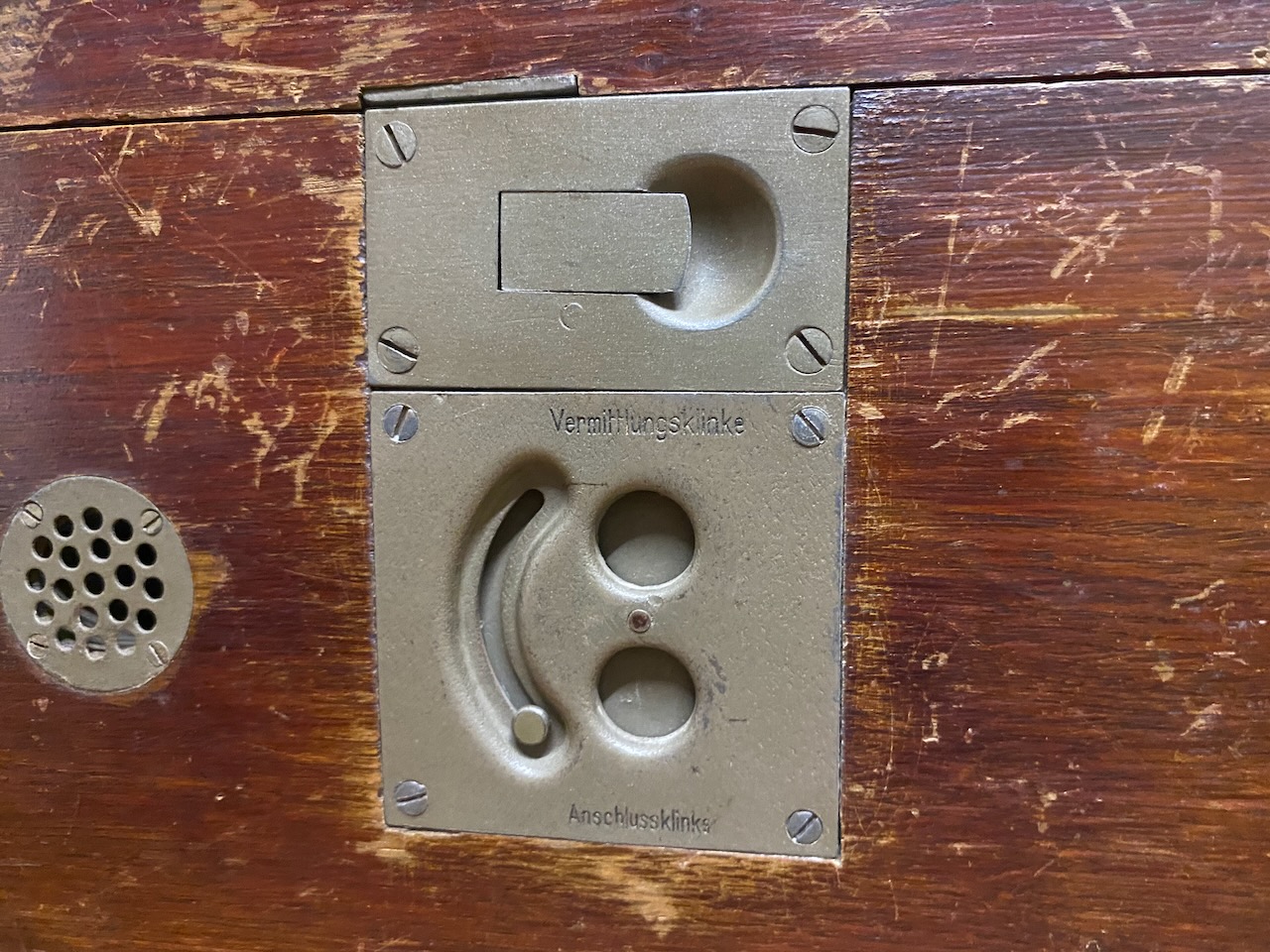
The magneto crank hole is covered by a spring loaded moveable lid.

From the back.

Disassembled.
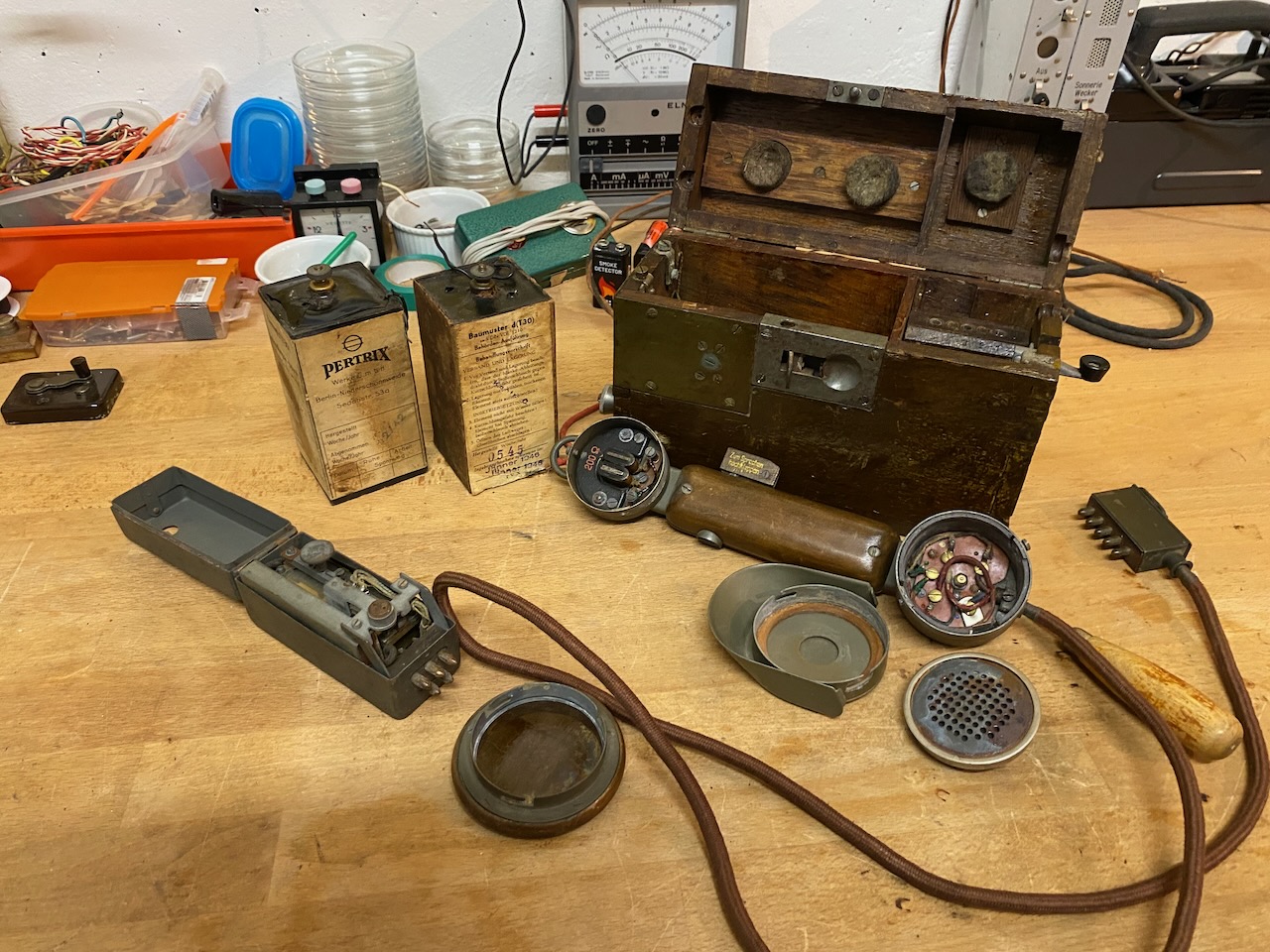
Wiring diagram mounted outside of top lid.
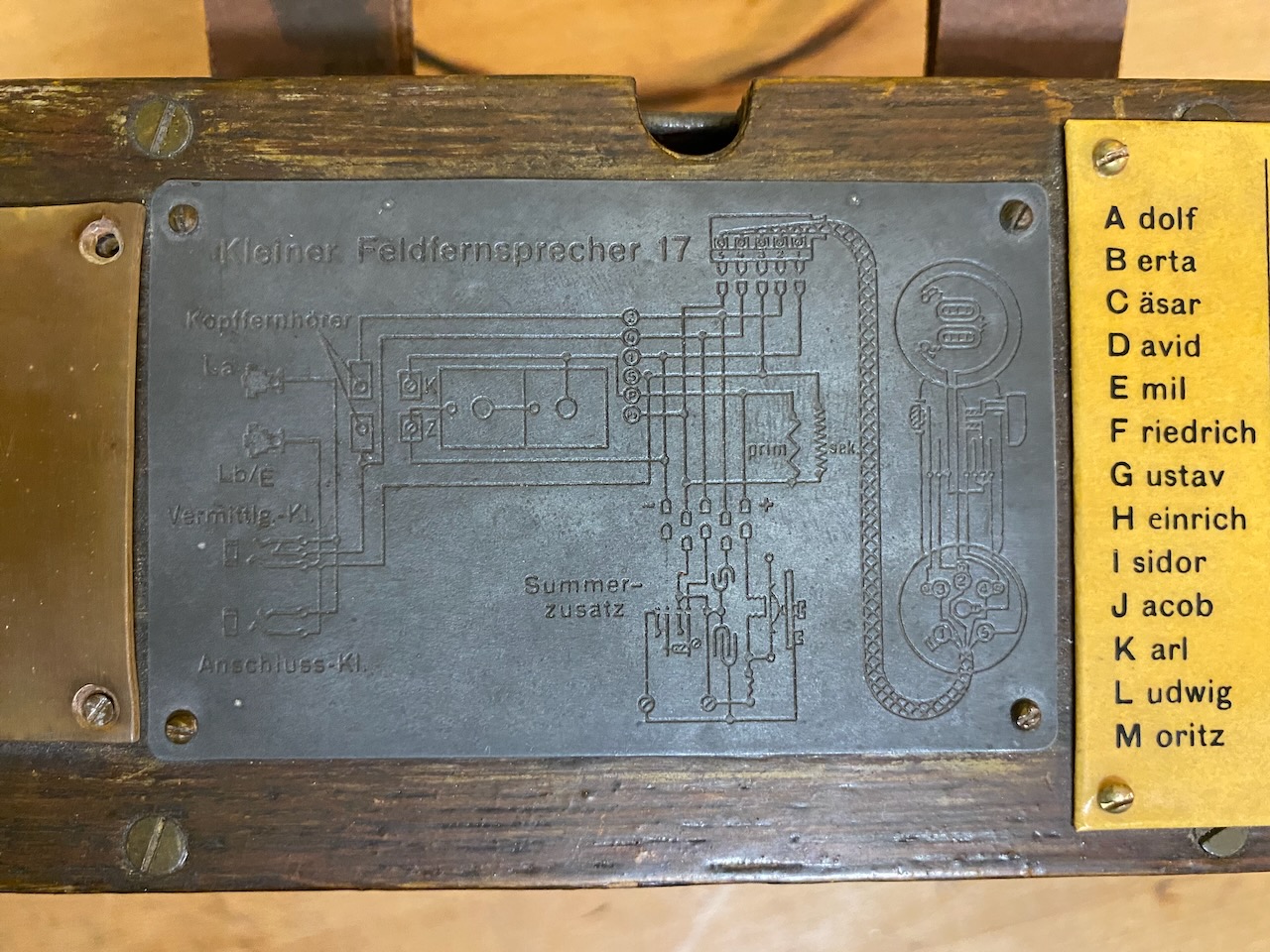
The handset "Feldhandapparat 17".
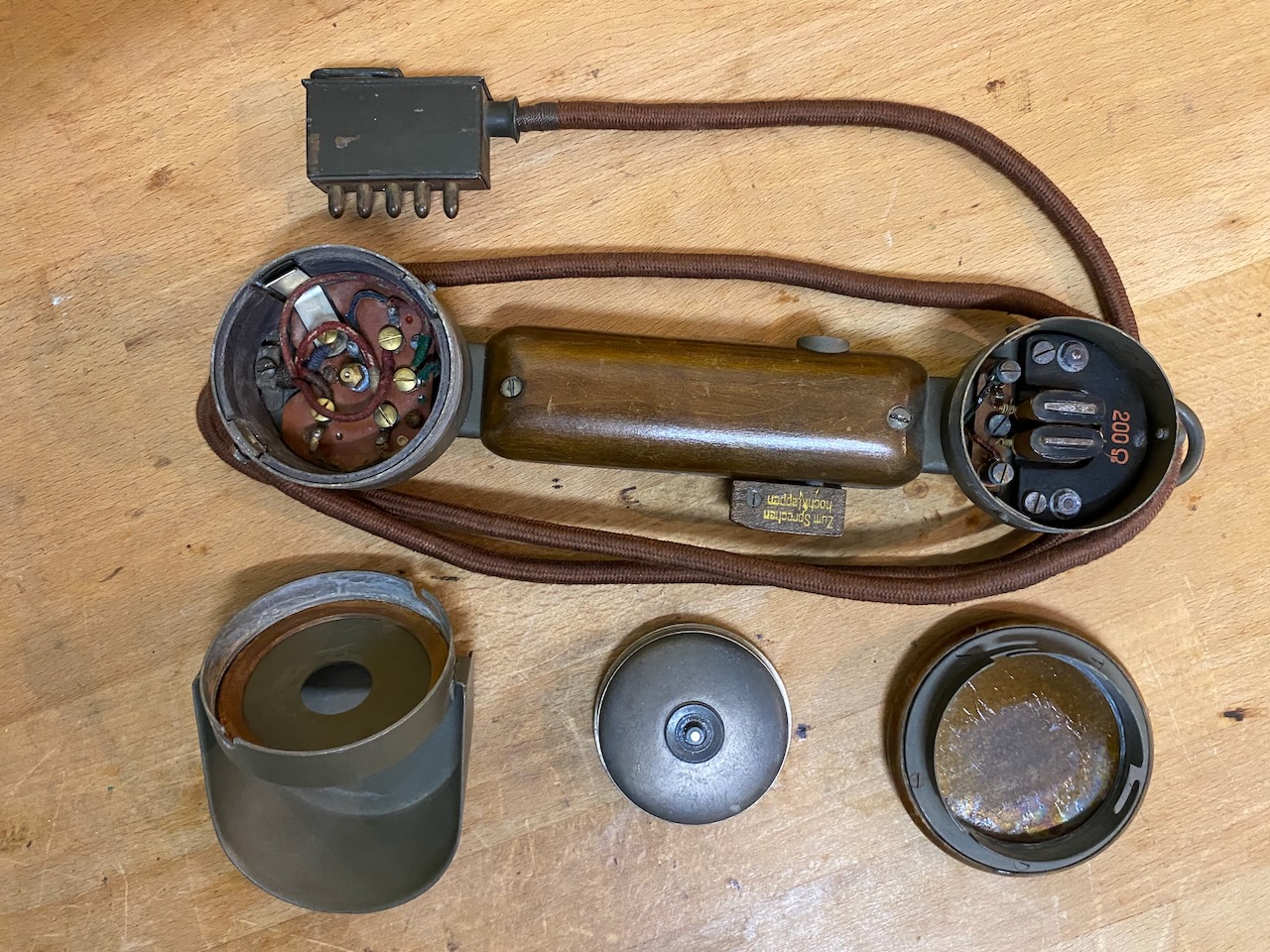
The open box.
On the left the battery compartment.
On the right the buzzer compartment with the foldable buzzer lever.
Behind it the handset sockets.
Not well readable, on the bottom right, also made by E. Zwietusch.
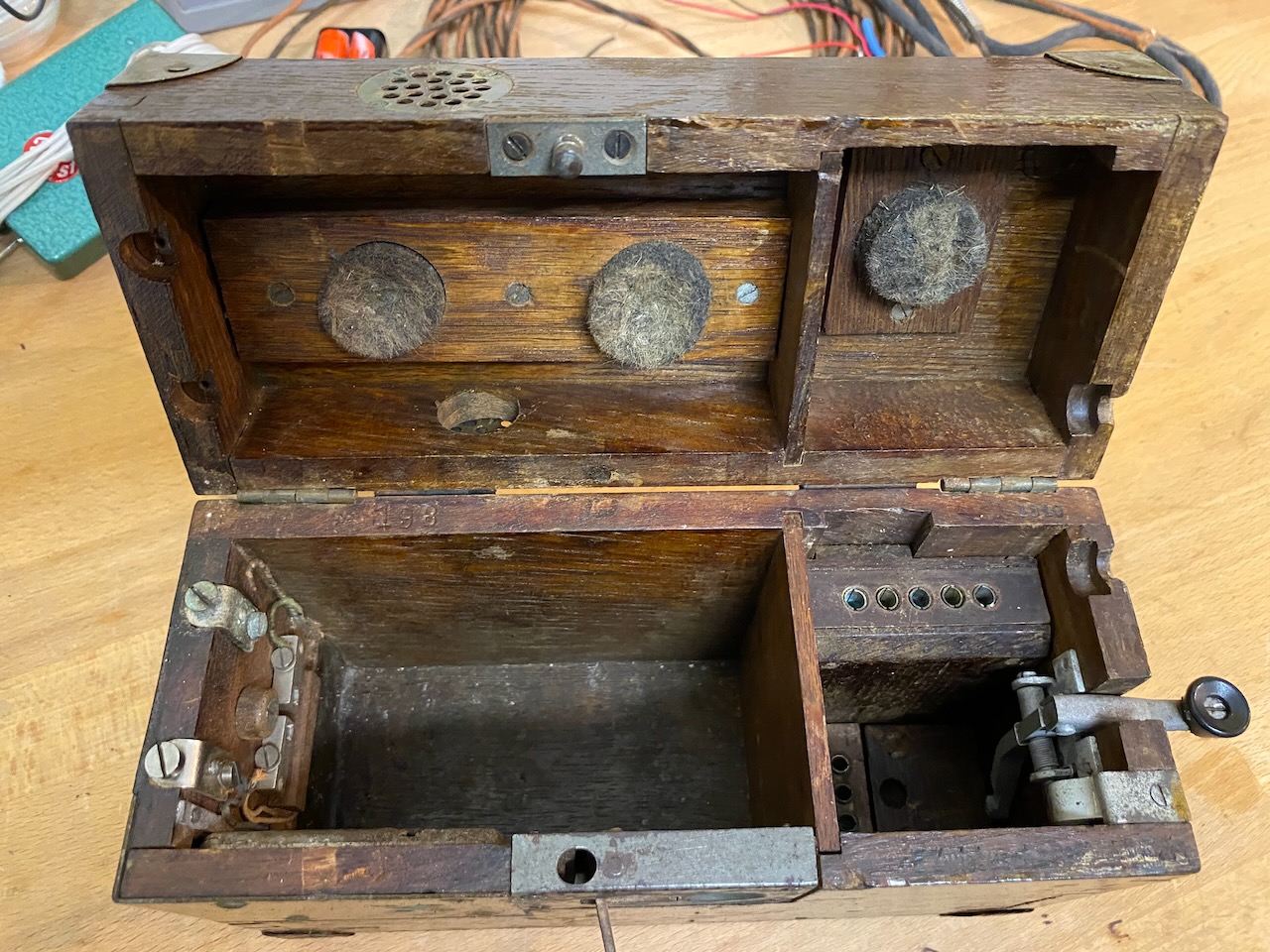
The buzzer sockets at the bottom.
Beneath the foldable buzzer lever a small bracket which holds the buzzer tight.

On the right side a lid can be removed to access and service the wiring.
The socket module is held from the back by two screws when removed it can be slid out to the top.
The coil is mounted behind the protruding small wood plank behind the socket.
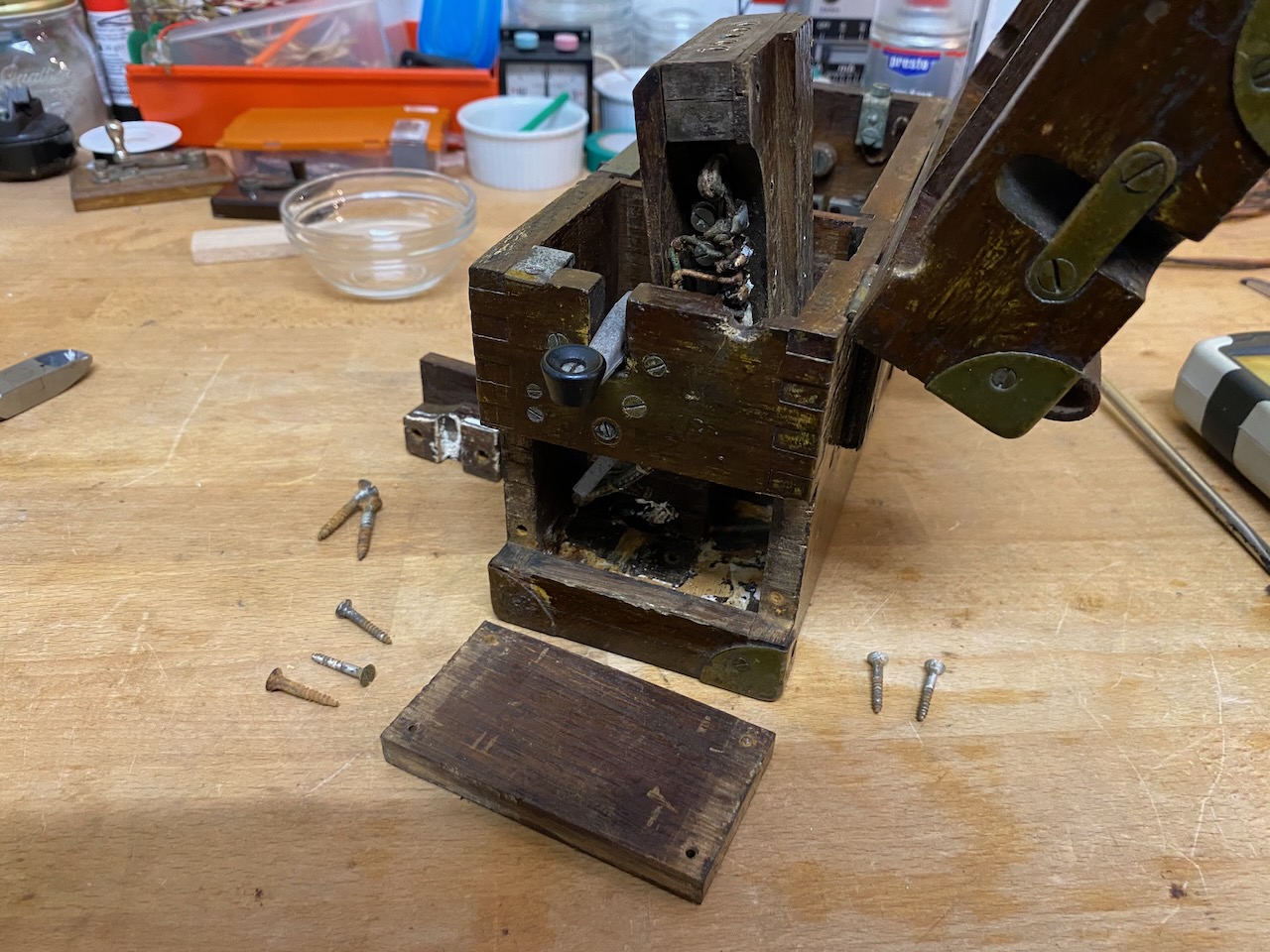
The screws which hold the buzzer socket from the bottom are too corroded and I could not get them out without the risk of damage.
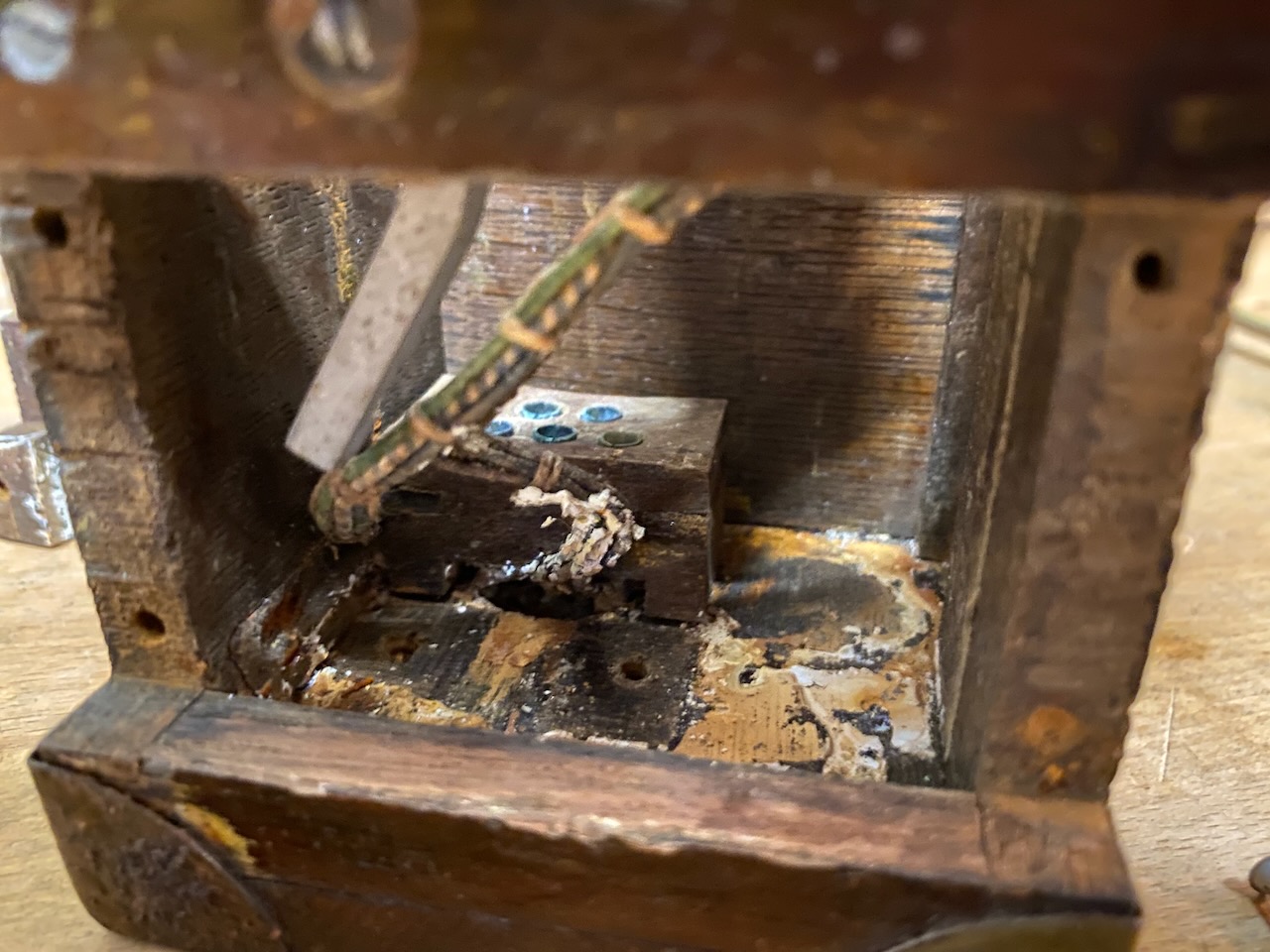
Neatly arranged.
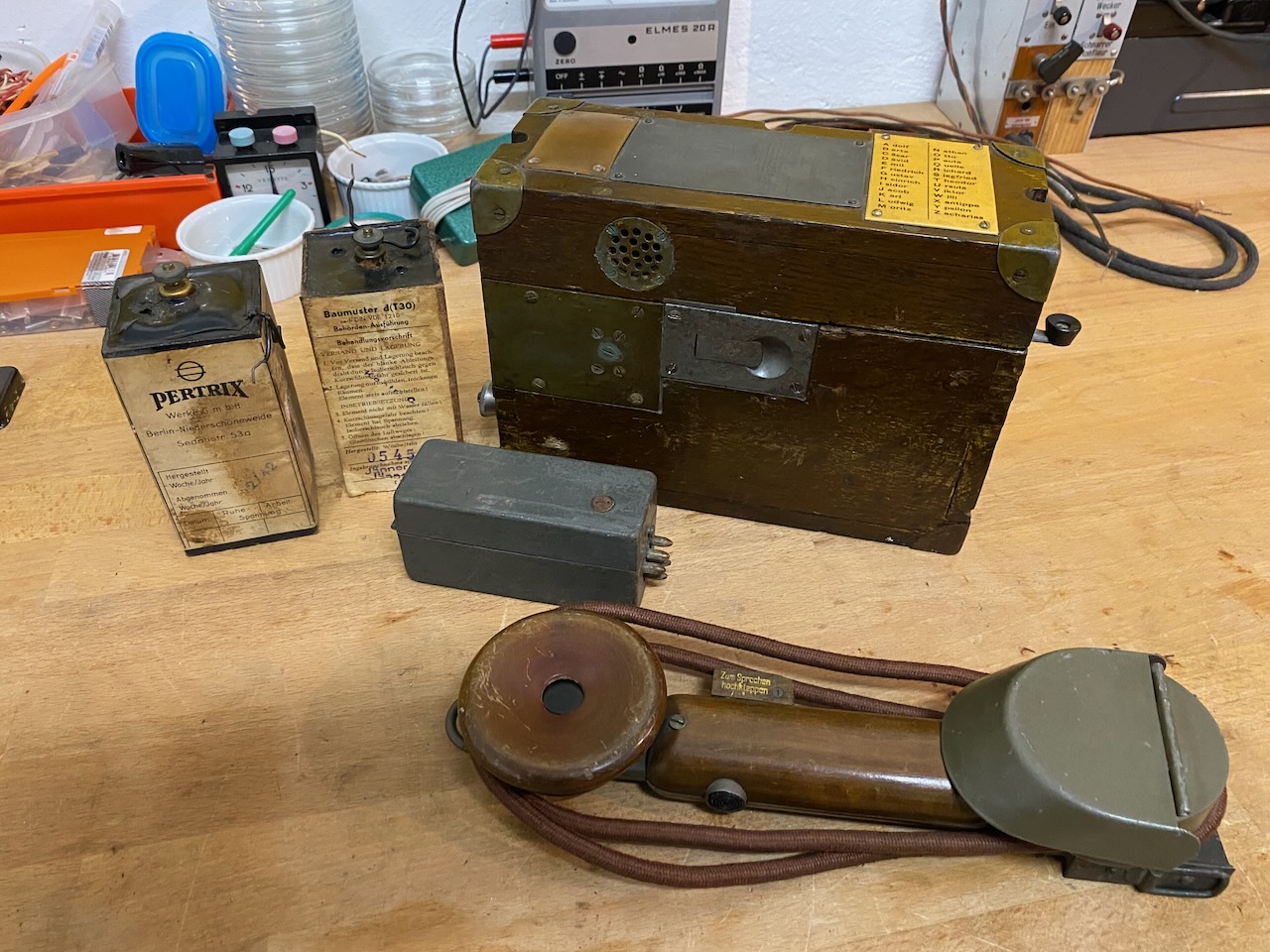
Ready to use.
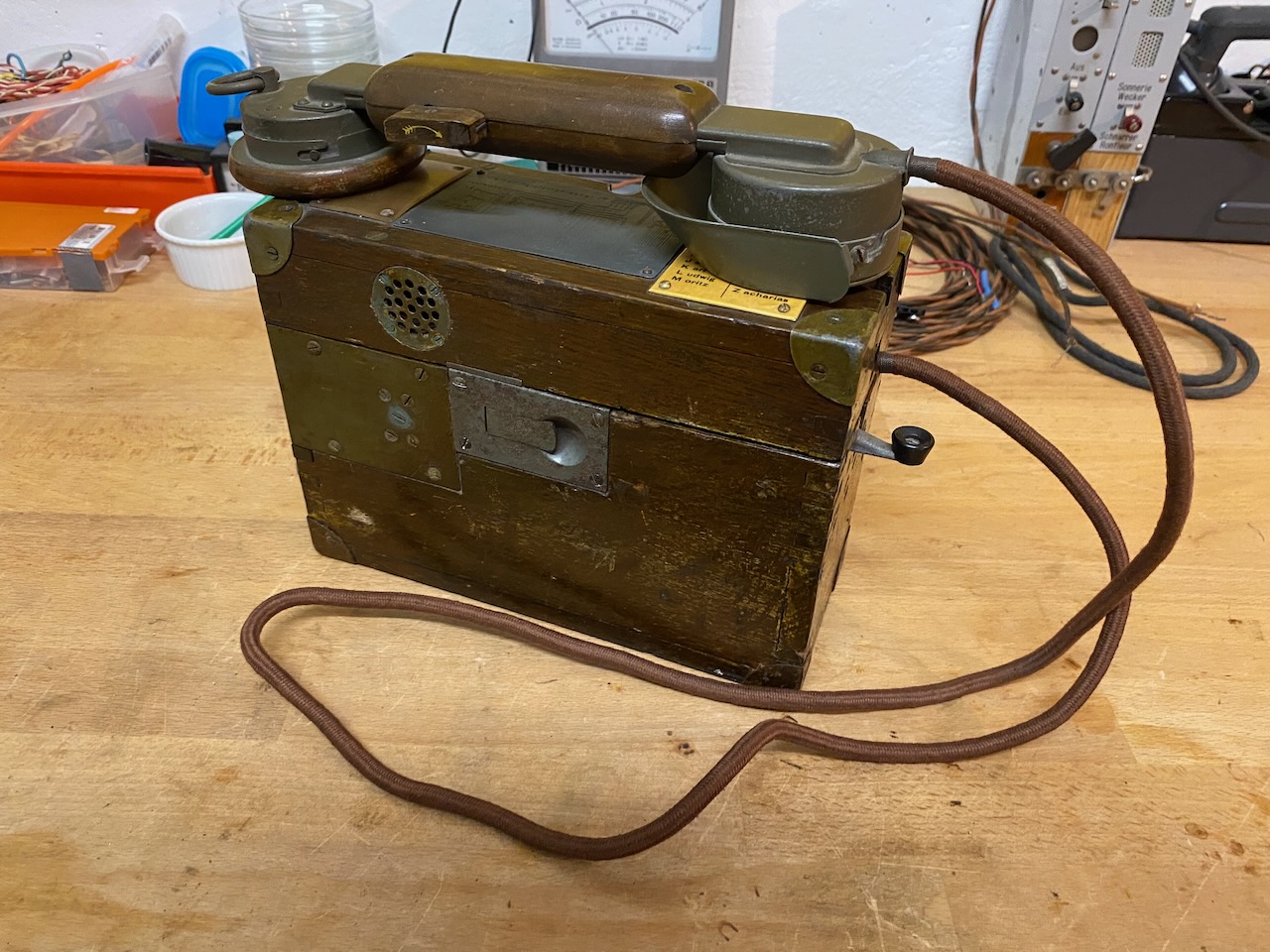
Ready for transport.
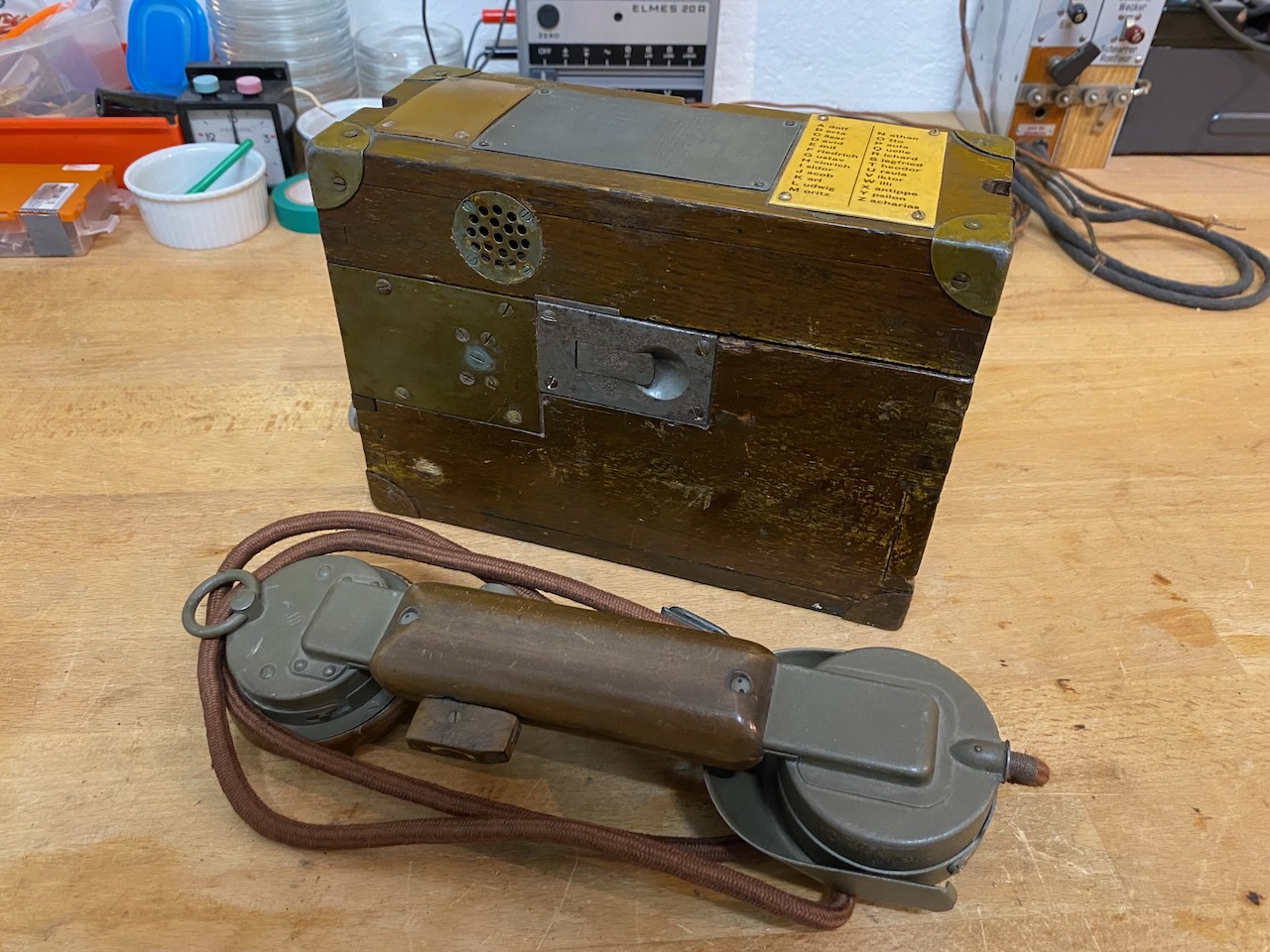
Front.
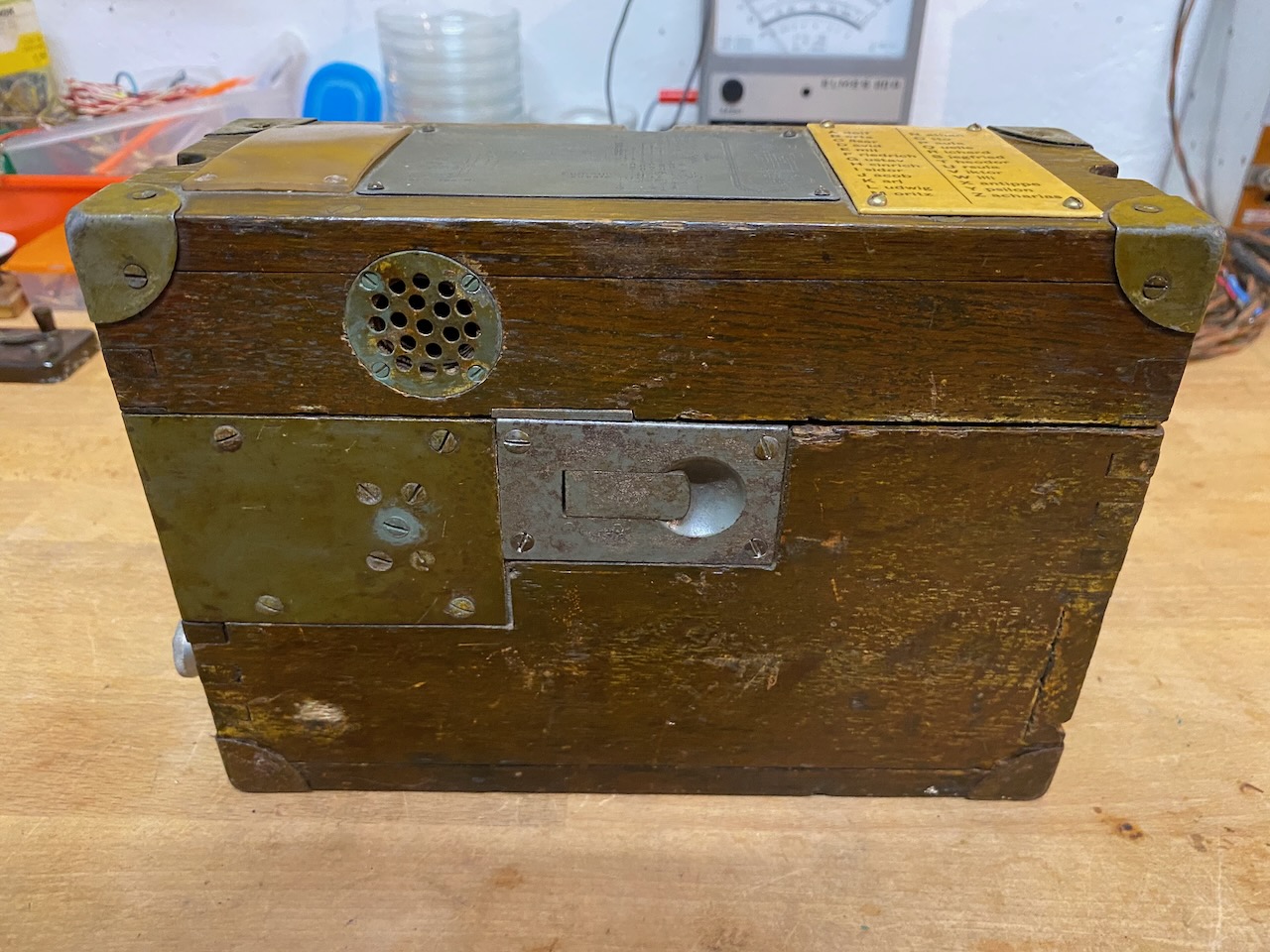
Top.
With a pre 1933 spelling alphabet in very good condition, probably a replica.

Left side.
Binding posts.
Headset sockets.
Line plug sockets.

Right side.

Back.

Grosser and Kleiner Feldfernsprecher 17.
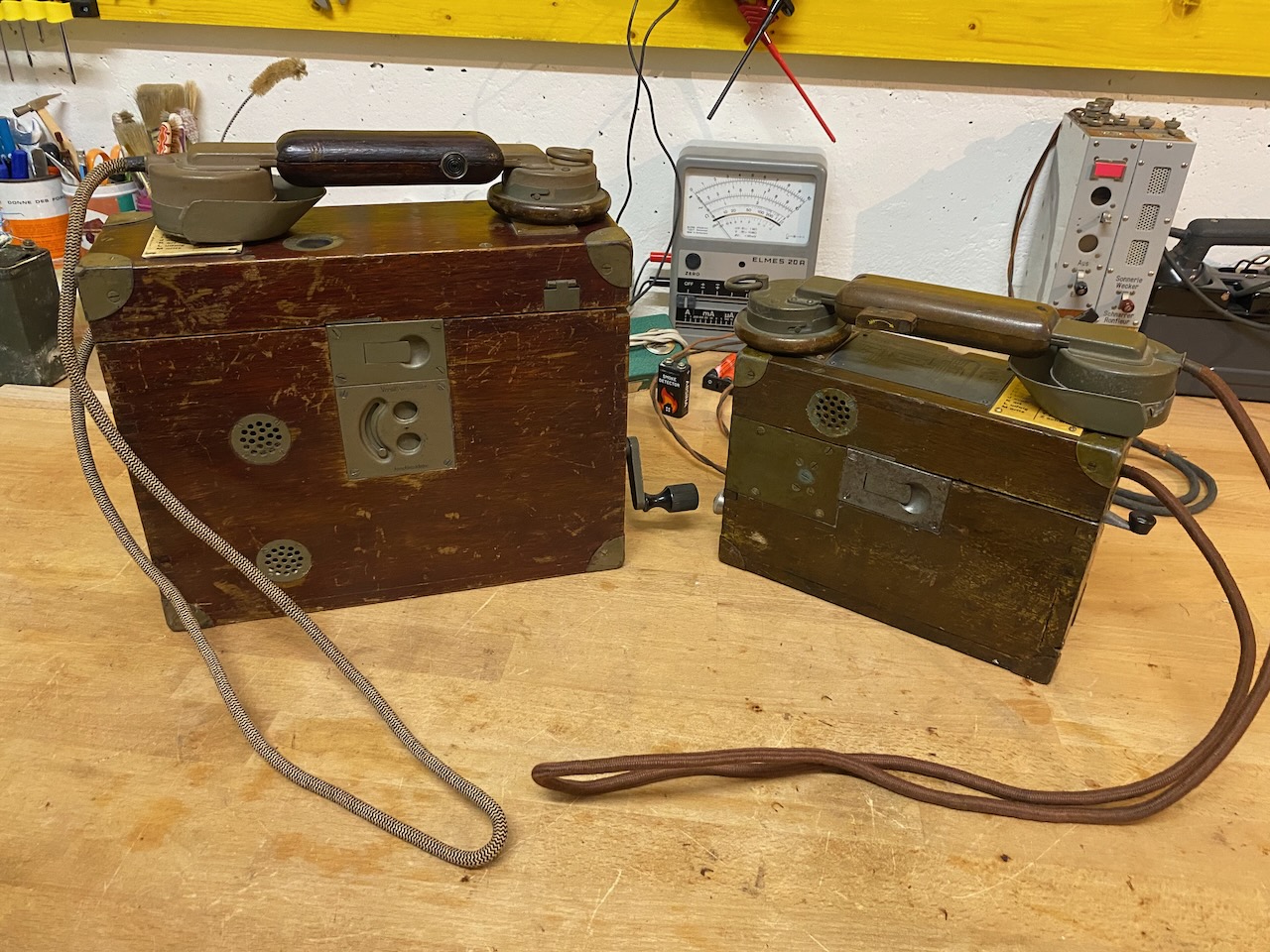
Grosser and Kleiner Feldfernsprecher 17.
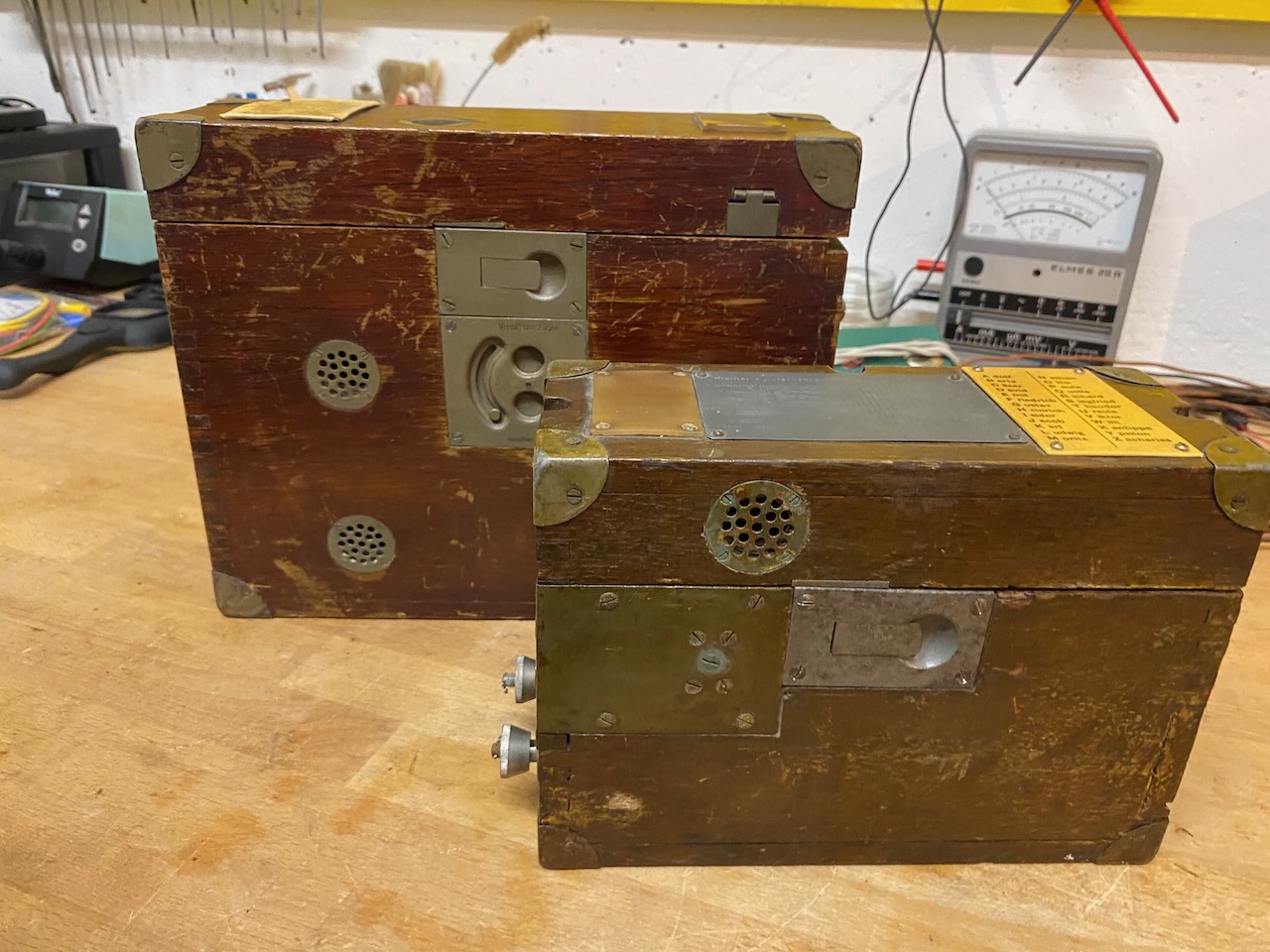
FFsp 33, 26 and 17.
The size and general setup of the 17 was kept for the 26 and 33 models.

FFsp 33, 26 and 17.

kleiner Feldfernsprecher 17 (right) compared to the Feldsprechbatterie 16 (left).
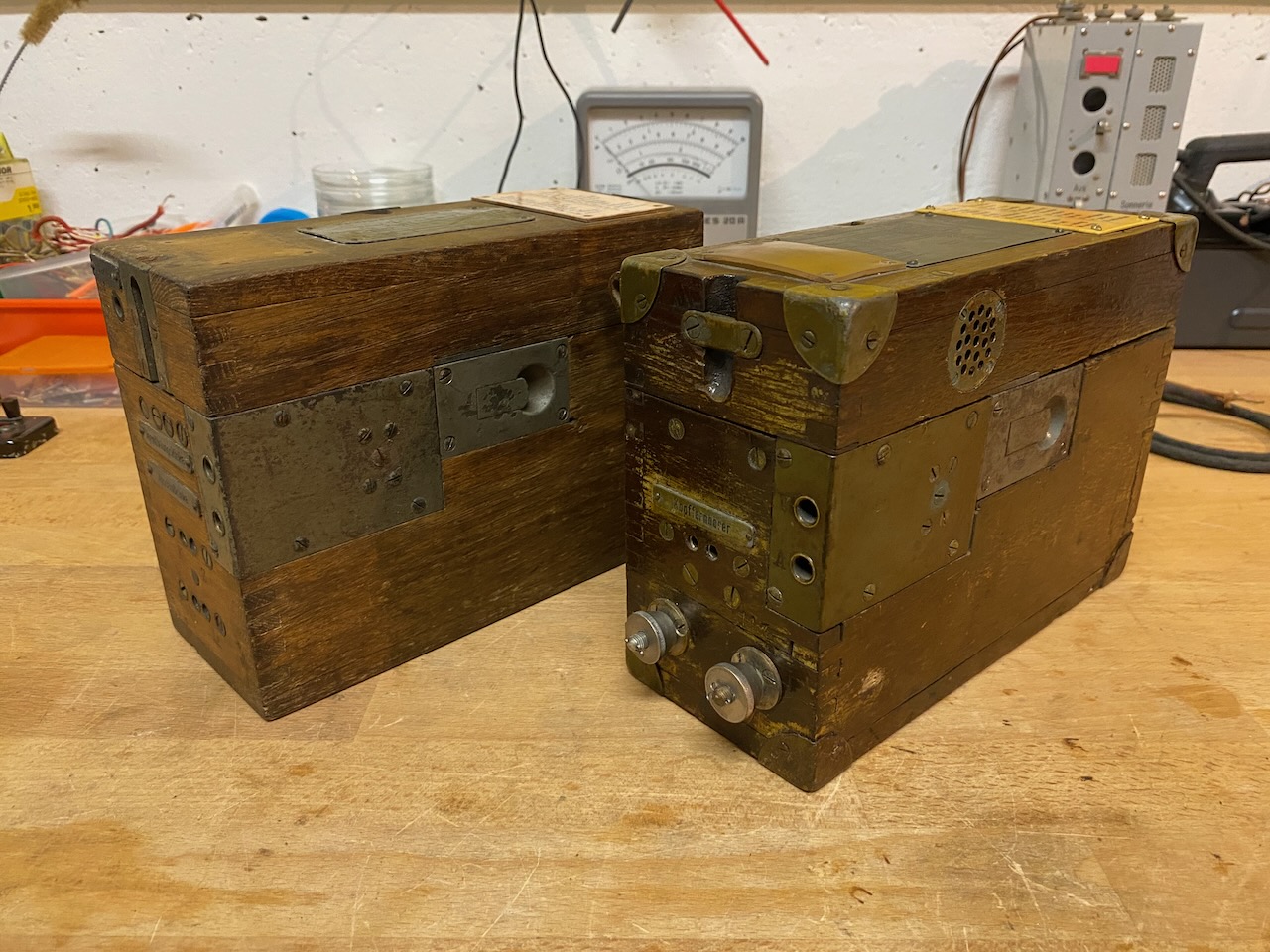
kleiner Feldfernsprecher 17 (right) compared to the Feldsprechbatterie 16 (left).

Creative Commons Attribution-ShareAlike 4.0 International License